The 50 best psychedelic rock albums of the Summer of Love
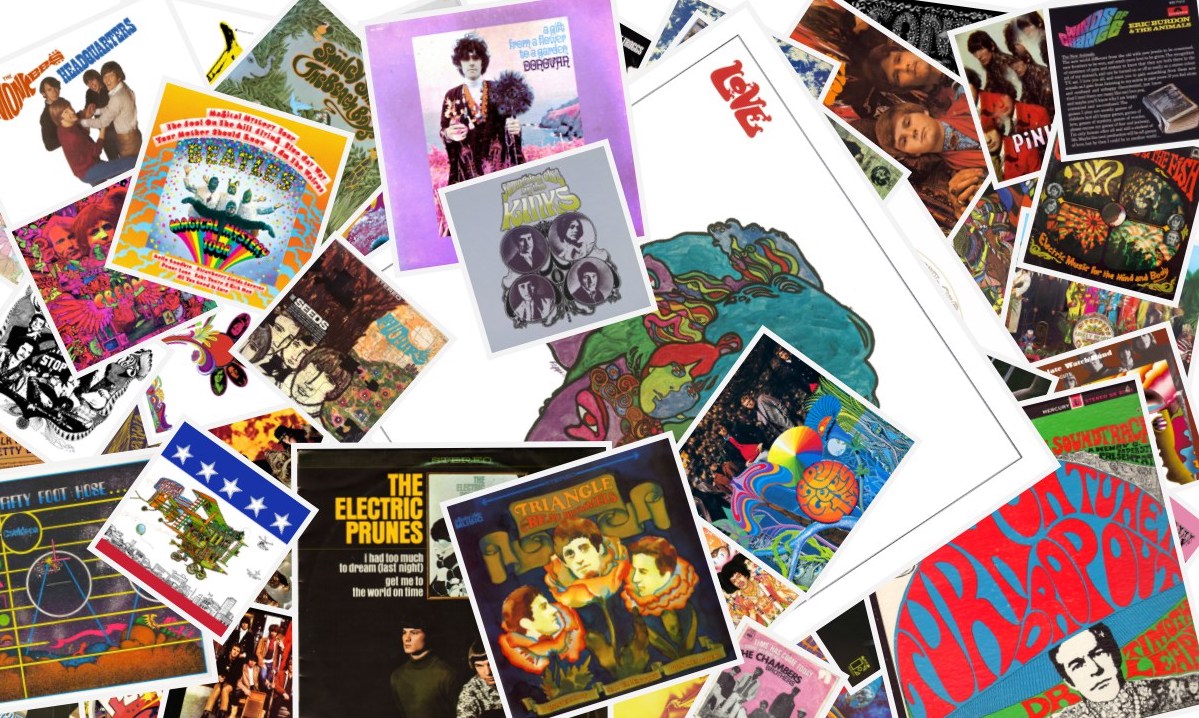
Summer of 2017 is upon us, which marks the 50th anniversary of the Summer of Love, the counter-cultural phenomenon that was the defining moment of the hippie movement. Its true home was the Haight-Ashbury district of San Francisco, but the Summer of Love was celebrated in New York, London, and all around the world.
The hippie movement was about a lot of things — drugs, love, peace, anti-establishment, anti-war — and at the forefront of the movement was the music, psychedelic rock. 1967 was the peak year for psychedelic rock. It gave us Sgt. Pepper’s, debut albums by Jimi Hendrix, The Doors, and the Grateful Dead, the iconic Monterey Pop Festival (which has a 50th anniversary edition happening this weekend), “San Francisco (Be Sure to Wear Flowers in Your Hair),” and so many more key artyfacts from the first psychedelic era. 1967 was the year where just about everyone tried to make a psychedelic rock record, from obscure underground bands to bubblegum pop groups. Even Sonny Bono!
It was such an exciting time for this music because it was so new. Everyone was figuring this stuff out for the very first time, and learning from each other. It’s fascinating to look at the very gradual developments that some of the most major rock bands in the world — The Beatles, The Beach Boys, The Rolling Stones, The Kinks, The Who, The Byrds — were making to get from their initial sounds to the colorful, mind-expanding sounds of psychedelia. It’s a sound that’s still wildly influential today. What would modern day bands like The Flaming Lips, Tame Impala, MGMT, Animal Collective, Fleet Foxes, Grizzly Bear, Ty Segall, Thee Oh Sees, Spiritualized, Mercury Rev, The Brian Jonestown Massacre, or the Elephant 6 collective sound like if not for the music of that era?
To celebrate the 50th anniversary of the Summer of Love, we’ve made a list of the 50 best psychedelic rock albums of 1967. Yes, all the usual suspects are on there, and yes we know you’re tired of reading about Sgt. Pepper’s, but hopefully this list will introduce you to something new to expand your mind (or record collection).
Read on for the list, followed by a Spotify playlist of music from most of the albums…
words by Andrew Sacher, Bill Pearis, and PSquared
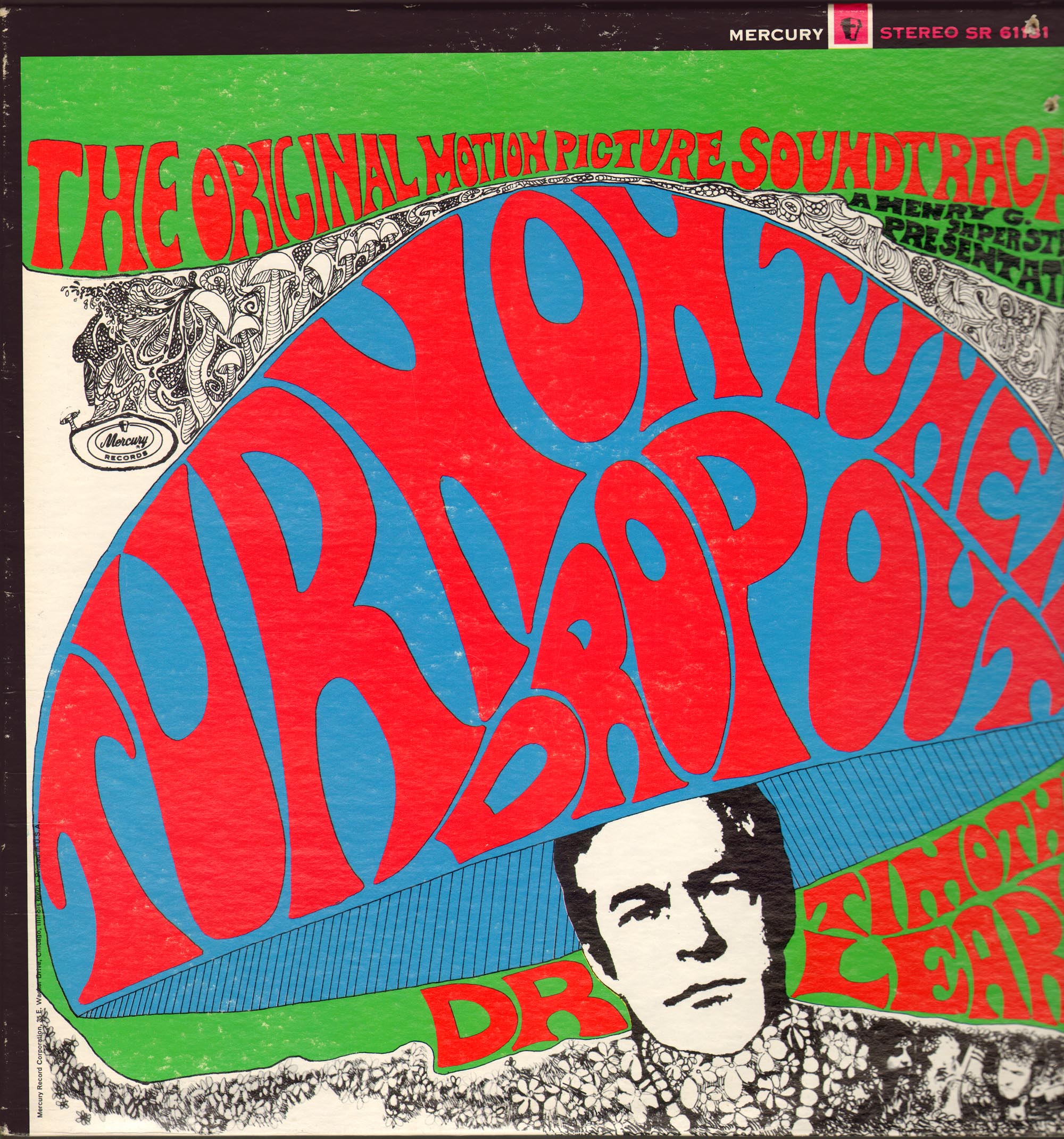
Timothy Leary – Turn On, Tune In, Drop Out
A curio to say the least. There are two versions with this title. The
first one was released in 1966 which is simply a spoken word meditation
with Dr Leary’s almost mysterious hushed voice discussing his work and
the advantages of “dropping out” and expanding your mind. The second one
and the one on this list is a whole different beast. Recorded a year
later, it was a soundtrack to a documentary. Like the earlier release,
it is spoken word but with sparse haunting mostly guitar and tabla music
over it. Unlike the direct plainspoken narration of the earlier record,
this sounds as if the voices are beamed down from somewhere in the
stratosphere. Although credited to Leary, it also features vocals from
Dr Ralph Metzner, Rosemary Woodruff and Maryvonne Giercarz. It’s a
freaky listen and one that the first time I heard it, in college on a
“cough cough” trip, scared the bejeezus out of me. Calling this a
singular work does not do it justice. While strange, its obvious
influence on the culture at the time cannot be overstated. So pull up a
chair, turn on, tune in and give this a whirl if you dare. [P.P.]
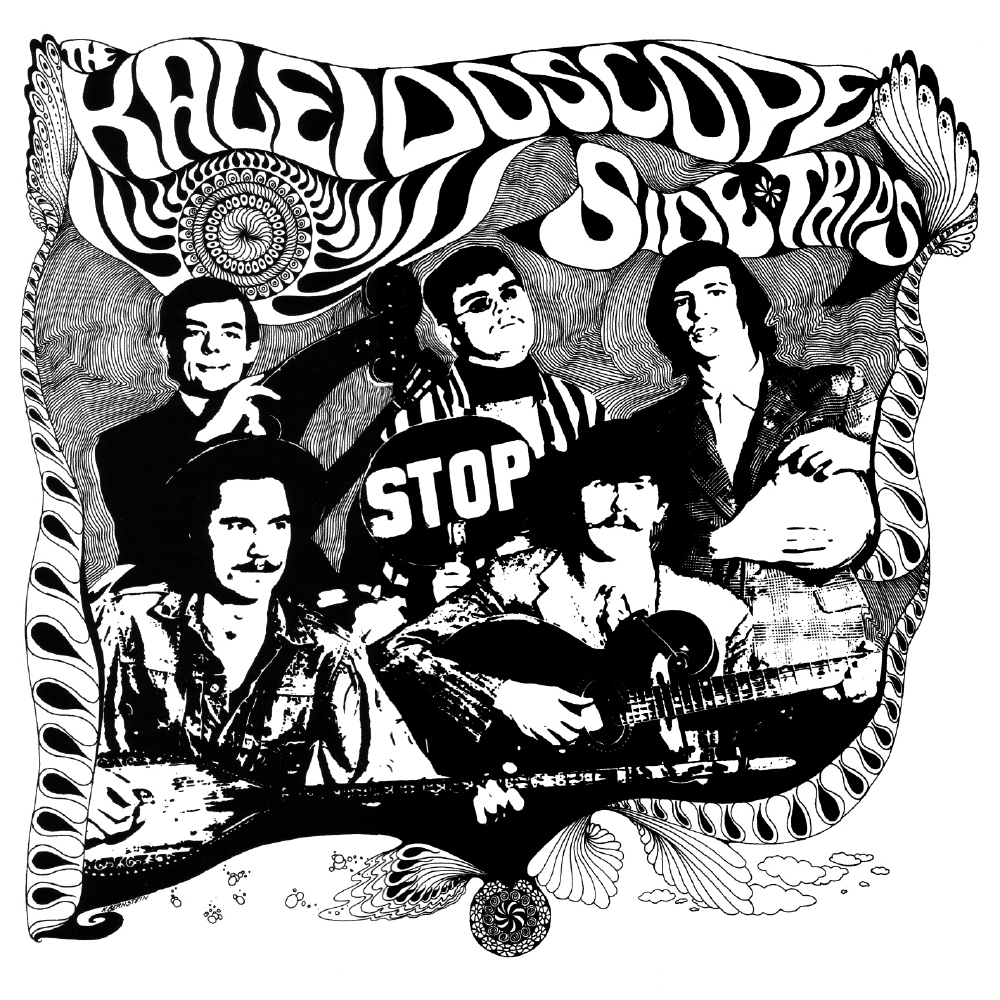
Kaleidoscope (US) – Side Trips
Kaleidoscope melded many different styles into their debut album. It
was rock and roll and standards mixed with world music. There are about a
1000 different instruments used on this record. Starting off with the
aptly titled “Egyptian Garden,” it weaves a chugging rock and roll 4 by 4
with an ethereal Eastern melody. Is that a bouzouki in the middle
there? One of the pleasures of this record is trying to figure out or at
least be amazed by all the different instruments popping up in each
song. Single “Please” is Byrdsian light country folk popping up
underneath sounds resembling parts of the Velvet Underground’s “Sunday
Morning”, which hadn’t been released yet. Speaking of the VU, “Keep Your
Mind Open,” the most straight up psych song on here, has a guitar
melody that sounds strangely similar to “The Black Angel’s Death Song.”
Could Lou Reed and John Cale have heard this record when they were doing
their LA residency? The album ends with the skittish jug band-like
version of Cab Calloway’s “Minnie the Moocher.” It is a record that
sounds like nothing else from this period and even today still delights
in its melting pot of sounds. [P.P.]

The Smoke – It’s Smoke Time
Pop psych — or beat psych as it’s often labeled — doesn’t get much
better than the opening track here. “My Friend Jack”’s stomping beat and
tremolo guitar rave also didn’t do much to hide its drug laced lyrics.
Unless of course you were a “square” in 1967 who didn’t understand what
exactly those sugar lumps he was eating was. The BBC weren’t and they
banned the song along with other stations throughout Europe. The kids
knew better and against all odds it became a hit, even reaching #2 on
the German charts which might explain why this, their only album, was
released in Germany and nowhere else. It was a strange occurrence all
around for a British band who started out as The Shots before being
signed to Columbia Records and changing their name. Many of the opinions
on this album say there is nothing here that reaches the high of “My
Friend Jack” but I disagree. I love this album. It’s a great little beat
blaster that will turn your head every time you listen to it. Marvel at
“You Can’t Catch Me’”s jittery guitar with theremin-like stabs that
come out of nowhere to hit you right in your sweet spot. Or the high
octane stomper “Don’t Lead Me On” that echoes The Capitols’ classic
“Cool Jerk” released a year before. How about the swinging R&B
nugget that is “I Wanna Make it With You”? Put that on at your next
party and watch the crowd start moving. Do yourself a favor and get
smoked with this gem of a record. [P.P.]

Vanilla Fudge – Vanilla Fudge
Ahhh the Fudge. I’ve had a love hate relationship with this record
for years. It all depends on what state of mind I’m in at the time. The
structure of this record is pretty simple. It’s all covers that have
been slowed down to half the speed of their original versions. Heavy on
the Hammond organ and the massive drumming of beast Carmine Appice.
Take for instance their version of “Ticket to Ride”; slowed down, it
becomes some sort of heavy psych soul behemoth. Same goes for “She’s Not
There” which renders Rod Argent’s original plea as a heart wrenching
soul gem. Some say this album works best on acid. It’s really like
nothing else that came out in ’67 and they certainly weren’t like any
other band at that time, not the least because they apparently were
managed by someone connected to one of the five mob families in NY.
Whoa! [P.P.]

The Troggs – Trogglodynamite
This was the second record by the great British garage psych band.
Unfortunately it is almost always slagged off by critics as being lazy,
uninspired and without hits. That’s unfair and without a doubt this
album is due for reexamination. Sure, it doesn’t contain a massive
explosion like their classic version of Chip Taylor’s “Wild Thing” from
their first LP From Nowhere…The Troggs, but there are gems
throughout here. Case in point, the first track, their frenetic cover of
Them’s “I Can Only Give You Everything.” Following that is leader Reg
Presley’s beautifully laconic “Last Summer.” Unfortunately, the album
didn’t contain as many songs penned by Presley who for my money was one
of the most unheralded British songwriters of that time. But boy what
they could do with other people’s material. Take the bouncy “Meet
Jacqueline” written by Albert Hammond (Strokes Jr’s pop) with its sly
nod to ‘50s American doo wop. Ronnie Bond’s “It’s Too Late” with it’s
hypnotic backbeat ends way too soon. Or maybe you want to shake your
tail feather as they crank through Bo Diddley’s “Mona” or Chuck Berry’s
“Little Queenie.” There is a reason guys like R.E.M’s Peter Buck love
this band and this record. Crank it up and see for yourself. [P.P.]

Sonny Bono – Inner Views
Ok, so this is no doubt one hell of a train wreck of a record. But
I’ve always thought of it as the most charming of trainwrecks. Sonny
decides he wants to capitalize on the psych craze and flower power the
kids are all flocking to. He can’t go all the way ‘cause he is as
conservative as you can get. So he spouts off nonsensical lyrics that
try to be controversial but never get there. Let’s take the title track,
a 12-minute sitar-driven opus that contains not only a line lifted from
“A Day in the Life”, but amazingly a bad harmonica solo that attempts
to ape Dylan. Somehow you can’t stop listening to it. At least I can’t. I
keep waiting for it to finally go off the rails and it never does.
Speaking of The Beatles and “A Day in the Life”, have a listen to the
ballad “I Told My Girl to Go Away.” Hear any similarities? Or maybe you
want to get heady with the topical “Pammies On A Bummer.” Here, after a
dirgey Doors-like run through, Sonny gives a vocal performance that can
only be described as drugged-out trippy. Apparently the session
musicians for this record were members of the Wrecking Crew. Sonny had
connections. I think you would be safe in calling this record a poor
man’s Lee Hazlewood. There are campy moments throughout and if you don’t
take it seriously, it’s a real hoot. Oh and take a few pulls before
listening and it gets exponentially better. Miss you Sonny. You were one
of a kind. [P.P.]

Eric Burdon & the Animals – Winds of Change
This isn’t your mother’s Animals or more to the point it’s not your
Mickie Most-produced rhythm and blues shakers Animals. Nope, this was
the moment that Eric Burdon left his band behind, moved to California
and formed a completely new version. Well not completely, he took
drummer Barry Jenkins with him. Gone are the rave-ups, instead replaced
by almost spoken word pieces with sparse instrumentation. That change is
clear in the title track that starts off the record. With sitar,
electric violin and a sparing drum beat, Burdon speaks about all the
artists that were part of the “winds of change.” Starting on King Elmore
and ending with “Bob Dylan sang about the winds of change. Blowing,
it’s all blowing, the winds of change.” This is followed by the
beautifully plaintive “Poems By the Sea” which showed Burdon not only
had one of the most distinctive, emotionally powerful belters of a voice
but could also sing in a graceful hushed way. There is the “hit” off
the record, the lilting love letter to the city “San Franciscan Nights”
with its refrain of “I wasn’t born there, perhaps I’ll die there.
There’s no place left to go, San Franciscan.” Of course it wouldn’t be
an Animals record without some of that belted out rock and roll. His
cover of The Rolling Stones’ “Paint It Black” bears little resemblance
to the original yet loses none of its power. The album also includes one
of the first answer songs, “Yes I am Experienced” which was singular in
that the song it answered, Hendrix’s “Are You Experienced,” had not
been released yet. [P.P.]
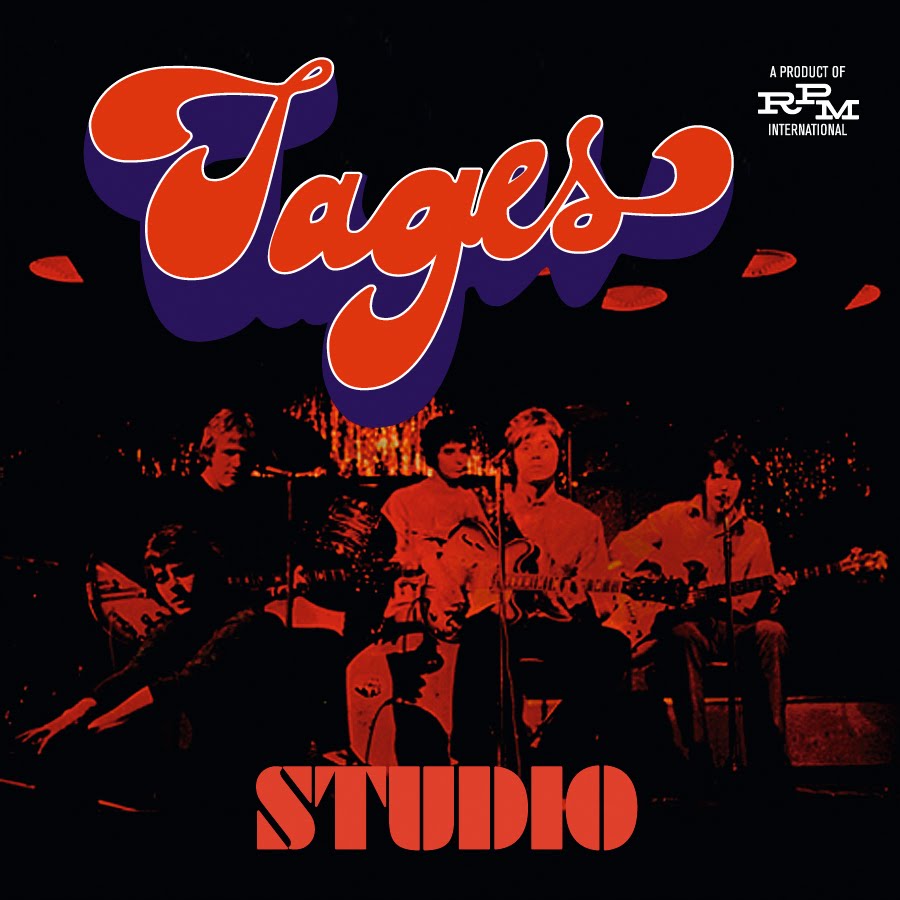
Tages – Studio
They could have been bigger than the Beatles. Well of course not, but
they were the biggest and best pop band to come out of Sweden in the
‘60s. Before this record they were a straight up beat pop rock and roll
band, having released two albums in Sweden that were huge hits there.
Come ’67 they wanted to expand their sound. Influenced, like everyone,
by The Beatles, they sojourned into the belly of the best, Abbey Road
Studios, to make this lovely record that couldn’t have been more aptly
named. What they came out with was less indebted to the Beatles and more
to the psych pop that bands like The Zombies were making. You have the
warped guitar and stomping drums of “It’s My Life”. Leadoff track “Have
You Seen Your Brother Lately”’s string driven opening gives way to a
perfectly lovely whimsy vocal juxtaposed with driving drums and what
seems to be a harpsichord hypnotically popping in and out. “Seeing With
Love” is a heady mix of string orchestration, keyboards, reverb drenched
vocals, trumpet, tuba and a kazoo deep in the background. It’s another
one of those records that reveals itself the more you listen to it. No
they never got big outside of their home country but don’t let that stop
you from sinking into this finely crafted piece of work. It’s a treat,
[P.P.]
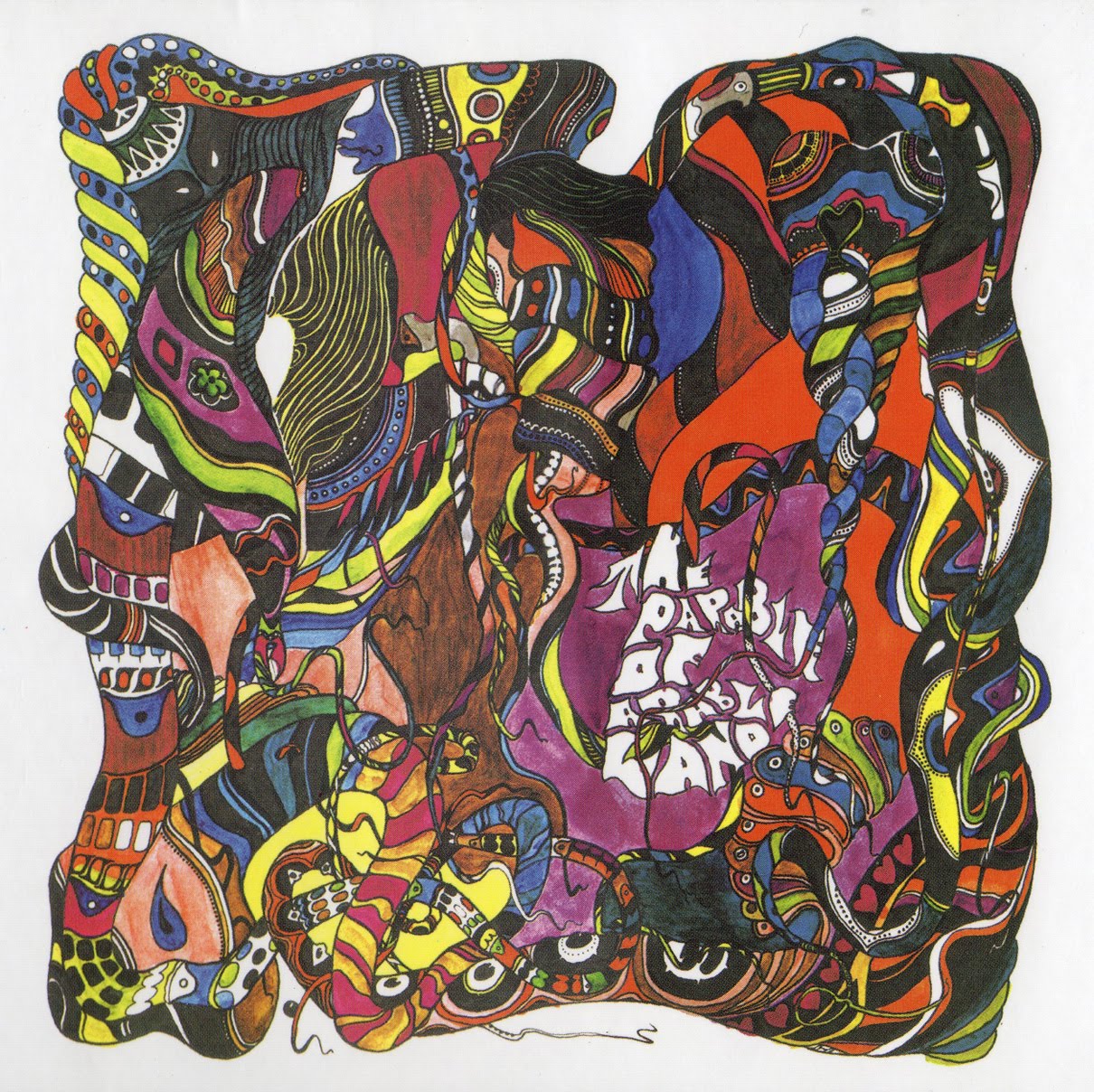
The Red Krayola – The Parable of Arable Land
What do you call this? Avant garde psych? Garage punk mania? Early
industrial? You tell me. Maybe a little bit of all. To call this a
singular achievement is not doing it justice. So the story goes that the
International Artists label and its head Lelan Rogers, riding high off
the success of Texas loonies The 13th Floor Elevators, went searching
for something that could top its craziness. Well they certainly found it
in Mayo Thompson. This, their debut record, is somewhat of a two sided
coin. There are the straightforward (well, as straightforward as
Thompson would ever be which is still truly out there) songs, and in
between those are the Free Form Freakouts. The Freakouts consisted of
basic parts laid out by the three members of the band along with around
45 of their friends going nuts with whatever they could find to create a
racket that was unheard of up to that point. As disparate as that
seems, it worked. It is a mesmerizing piece of work that is still
startling to this day. Some have called it the American version of Piper at the Gates of Dawn which I wouldn’t say is too far fetched. Way ahead of its time. [P.P.]

Kaleidoscope (UK) – Tangerine Dream
There were multiple Kaleidoscopes in 1967, including one from the
United States and the other from England, who both released debut albums
that year. If you’re reading this list, both are worth checking out (in
fact the U.S. band’s Side Trips is our #49). The UK band’s Tangerine Dream
is a lost gem of baroque psych. Sporting chiming 12-string guitars and
tight harmonies, they at times recall their contemporaries Pink Floyd (a
la “Arnold Layne”), especially on their hallucinogenic debut single
“Flight from Ashiya” which is the penultimate song on Side 1. The record
also dabbles in Kinks-y tales of everyday life in “Mr Small the Watch
Repair Man” and fairy tale fantasy, all with equal success, and still
holds up — even if lyrics like “The jester and the goldfish have joined
minds above the moon” seem like pastiche today. [B.P.]
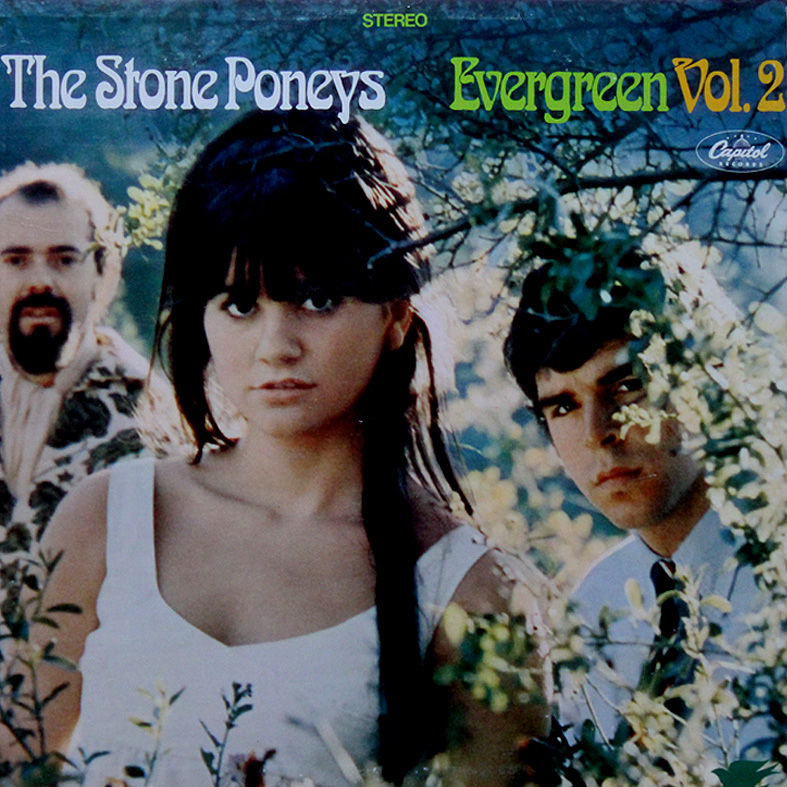
The Stone Poneys – Evergreen Vol. 2
Before becoming a massive solo artist, Linda Ronstadt was one third
of LA folk rock trio The Stone Poneys with Bobby Kimmel and Kenny
Edwards. While not as explicitly psychedelic as some other Summer of
Love bands, those vibes are all over The Stone Poneys’ music. Their
gorgeous three-part harmonies were cut from the same cloth as as the
sunshine pop bands of the era, and The Stone Poneys incorporated raga
rock elements, as on the album’s title track. Their love of minor-key
songs had them often channelling British folk instead of their home
country’s, and those darker songs are sort of inherently more
psychedelic. Evergreen Vol. 2 is also fleshed out with strings,
harpsichord, and other non-traditional (for rock) instruments that were
becoming common for rock during the psychedelic era. It’s probably no
coincidence that a band who shared a hometown with The Doors, Love, Iron
Butterfly, The Byrds, and The Mamas & the Papas were exploring
their trippy side in this particular year. It didn’t last. Evergreen Vol. 2
produced a hit with the Michael Nesmith-penned “Different Drum,” which
quickly led to Linda Ronstadt’s not-very-psychedelic solo career and the
end of The Stone Poneys. Still, this album remains an underrated gem. [A.S.]

Fifty Foot Hose – Cauldron
Here is maybe one of the weirdest and strangest records to come out
at the time and that’s saying a lot. You would never believe listening
to this record that it crept out of San Francisco; it sounds a million
miles away from every other band from there. It’s a heady mixture going
on here. Everything from straight ahead rock to blues to psych to soul
to folk to avant-garde tape manipulation. And there are the weird
electronic sounds interspersed between the songs, all the work of one
Louis Marcheschi who created the synths from scratch. You have the
crazed, mind-bending take on Billie Holiday’s “God Bless the Child” that
no doubt members of The Residents took to heart. There’s the heavy acid
fry of “Red The Sign Post” punctuated throughout what sounds like some
otherworldly cow bell, and the gut wrenching psych soul of “If Not This
Time”. There’s the hypnotic blues folk of “Fly Free”, and it ends with
“Desire”, which starts off as what seems to be a rather straightforward
uptempo blues vamp only to become a crazed schizo ripper that I bet the
Butthole Surfers listened to more than once down in Texas. The album was
all but ignored at the time and sadly the original group disbanded and
never made another album. Fun fact, most of them went on to be in a
touring company of the musical Hair. [P.P.]

The Beau Brummels – Triangle
Here we have one of those records that was so cruelly under
appreciated when it came out and still doesn’t get the respect it
deserves. You wouldn’t be in the minority if you thought they were a
British band; they actually hailed from San Francisco and were for all
intents and purposes a country band although they mixed in folk and rock
as well. This was their fourth album but before this they were mostly
relegated to being a band that recorded covers or songs written by
others. With this album they were let free to come up with their own
material and boy did they make the most out of it. Go right to the
middle of the album and listen to the delicate beauty of “Magic Hollow.”
They shot for the stars with some of the session musicians they used
here, and for this song that’s Van Dyke Parks on harpsichord. You have
the sweet tooth combo of gently picked acoustic guitar, shuffling drums
and grandiose brass in the title track. There’s a tip of the hat to
their country bent with a cover of Merle Haggard’s “Nine Pound Hammer”
with just enough extraneous touches to call it a rave-up. Let’s also
take a second to shout out the vocal gymnastics of singer Sal Valentino,
one of the more unique voices of that era. Triangle isn’t a
record that will jump out at you from the get go. It requires you to sit
and give in to its charms. Once you do though, It will be a record that
stays with you long after. [P.P.]

The Deviants – Ptoof!
For all the whimsy going on in Britannia during this period, there
would be rebellion among some. Here was rebellion in all its glory. Led
by firebrand Mick Farren, this debut record was a middle finger to all
of that. It conjured an image of distrust in the flower power hooey they
saw wherever they turned, as well as in the establishment. Obviously
influenced by American counterparts in Zappa and The Fugs, the record
had deep heavy workouts like their twisted take on Them’s “Gloria” in
opening track “I’m Coming Home.” Or “Charlie,” a heavy R&B skronk
with an eerie macabre guitar line buried deep below. “Nothing Man”’s
rhythmic dark beat gives way to an avant garde cut up. How about
“Garbage,” which in 5 minutes goes from a Bo Diddley rip to blues vamp
and finally veers off into the aforementioned Zappa/Fugs mania? This is
another record that must have made people at the time go “what the
hell.” Strange Days indeed. Drummer Barry Hunter went on to form the
even heavier Pink Fairies. [P.P.]

Grateful Dead – The Grateful Dead
Before becoming the defining jam band, the Grateful Dead had
rather humble beginnings. Their self-titled debut album was a mix of
covers of blues and folk songs, with just a couple of originals. The
psychedelia of Anthem of the Sun and Aoxomoxoa is nowhere to be found here, nor is the folk rock of American Beauty and Workingman’s Dead.
The two originals, “The Golden Road (To Ultimate Devotion)” and “Cream
Puff War,” are perfectly fine garagey rock songs, though the covers make
for the best moments on this album. Their version of the traditional
“Cold Rain and Snow” is great, and their pretty cover of the folk song
“Morning Dew” (a rare song on the album to remain a show-stopper late
into their career) is a classic recording. The Grateful Dead is
better for completists and diehards than beginners, but once you’ve
heard their more classic material, it really is a fascinating look into
their early days as a band. Jerry’s voice sounds as pristine as it did
in the ’70s, and the Dead’s unique soloing is already starting to come
together on this album. The studio albums were never as improvisational
as the live shows, but the Dead’s 10 minute version of “Viola Lee Blues”
is a great showcase of their ability to jam. Maybe the biggest treat as
far as studio albums go is the prominence of Pigpen’s organ. It was a
crucial part of their early sound, and he shines here as much as Jerry
does. [A.S.]
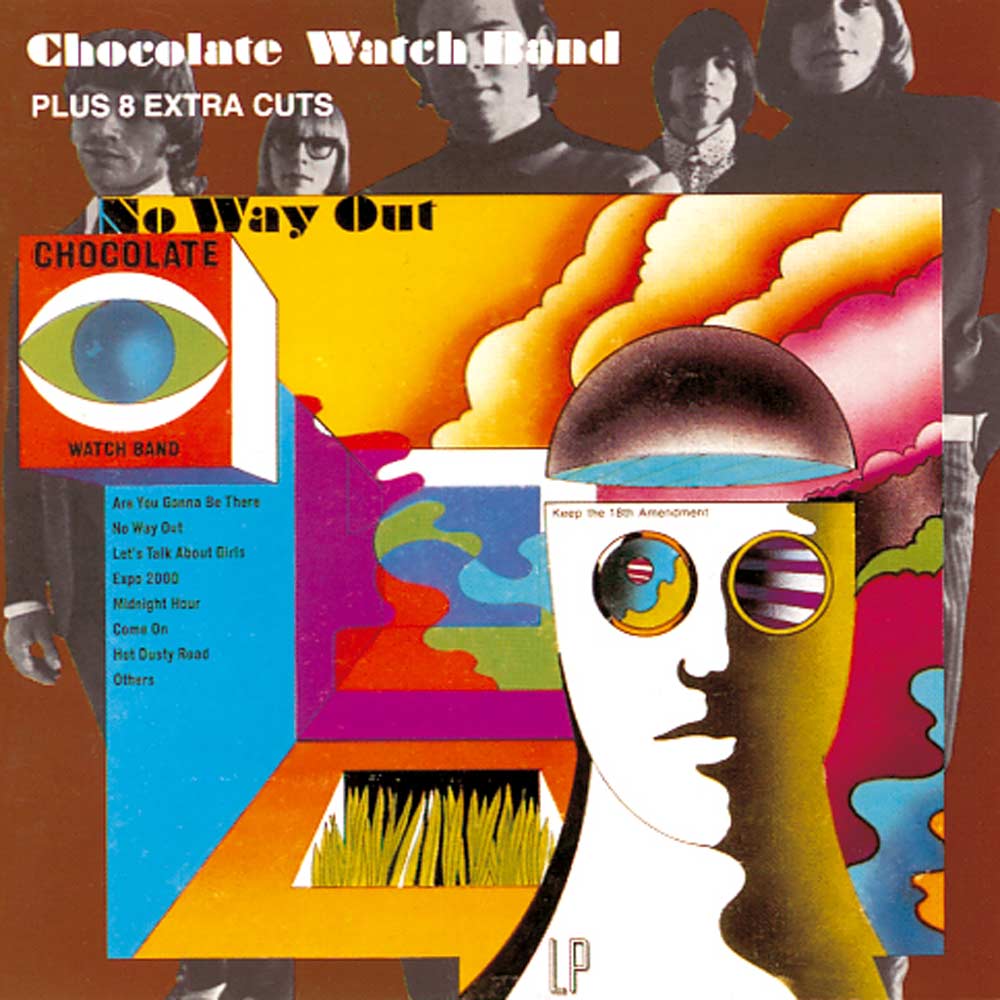
The Chocolate Watch Band – No Way Out
This is an overlooked record of the time that has only grown in
stature over the years. Frankly, the group got shafted by their producer
Ed Cobb. Without much control over the recording, most of the tracks
were messed with later in production. Session musicians were brought in
to overdub. Lead singer David Aguilar’s vocals were removed from songs
and replaced with session man Don Bennett. In fact, very few of the
final songs feature all of the members together. Why does this work
then? It’s anybody’s guess but it does. It’s filled with garage rock
monsters highly indebted to the Rolling Stones. Tell me that doesn’t
sound like Mick Jagger on “Are You Gonna Be There (At the Love In)”. Dig
the Bo Diddley meets sitar rocker “Gone and Passes By” or “No Way Out”
with its eerily similarity to Jefferson Airplane guitar twisting. Or the
popular “Let’s Talk About Girls” which ended up on the legendary Nuggets
compilation. The distorted guitar running throughout “No Way Out” could
be an extremely early example of proto-punk. You can’t help but feel
sorry for the band but wow, what a fantastic train wreck this turned out
to be. [P.P.]

The Seeds – Future
The crazy Sky Saxon and The Seeds were a straight up garage rock band
on their first two albums. They had a massive hit with “Pushin Too
Hard”. But here they were making their third record and they wanted in
on the psych craze. Much like Love were doing, they wanted to experiment
with baroque orchestration and classical structures mixed with their
garage bent. Future is a mish mash of a record. Sometimes it
works and sometimes it goes nowhere. But when it works, it’s a gem.
“Travel With Your Mind”, with its hell bent mind melding, is driven by
an intense eastern flavor; the bongos demand the song to keep coming at
you. “Out of the Question”’s garage R&B stomp is complimented by a
howling echo-drenched Saxon vocal. They revert back to the melody of
“Pushin Too Hard” (why not) on “Thousand Shadows” but this time with a
knife-cutting guitar line throughout. Finally, the over-seven-minute
closing track “Fallin’” threatens to go off the rails but never does.
There wasn’t much more of this type of exploration after this album, as
Sky Saxon joined Father Yod and the Source Family cult in 1973, but Sky
did continue to make music until his death in 2009. [P.P.]

The Monkees – Headquarters
While The Monkees began their career with a casting call, it didn’t
take long — before the end of the first season of their hit NBC series —
for Peter Tork, Micky Dolenz, Davy Jones, and Michael Nesmith to fight
against their perception as a manufactured band miming Beatlemania. Headquarters
was the first Monkees album where the members wrote a large chunk of
the songs, and they proved to be up to the challenge, even if the record
(which went to #1) didn’t yield a hit as big as their first four
singles. Nesmith’s “You Just May Be the One” and “Sunny Girlfriend” are
terrific Byrds-esque style janglepop, but it’s Dolenz’s “Randy Scouse
Git” (which had to be retitled “Alternate Title” in the UK where it went
to #2) that’s the clear standout on the album, which also proved a
taste of what was to come later that same year on Pisces, Aquarius, Capricorn & Jones Ltd.. [B.P.]

Strawberry Alarm Clock – Incense and Peppermints
Overshadowing the rest of this album is the title track, arguably
Strawberry Alarm Clock’s best song and their most significant
contribution to hippie culture. It wasn’t all Incense and Peppermints
had to offer though. They kick things off on an even trippier note,
with the lengthy “The World Is on Fire.” Over the course of its
eight-and-a-half minute running time, the band jam the night away with
solos from organs, flutes, vibraphones, and of course guitars. Few songs
sound ready-made for lava lamps like this one. The rest of the album is
more song and less jam oriented, but with all those same instruments
played at their most mind-bending, and with all the hallucinatory lyrics
you need. (“Rainy Day Mushroom Pillow” is a prime example.) Compared to
some of the bigger Summer of Love bands, SAC were a bit of a one trick
pony on Incense and Peppermints, but their dedication to such overt psychedelia keeps them a favorite in niche circles today. [A.S.]
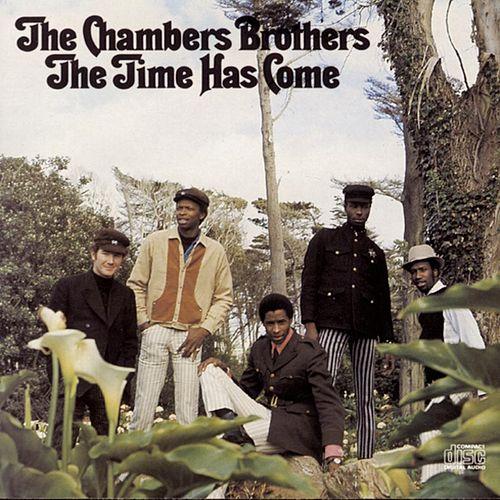
The Chambers Brothers – The Time Has Come
Want more cowbell? Who doesn’t when it was used so masterfully on one
of the greatest songs ever made. The 11 minute opus “Time Has Come
Today” was actually recorded as a one off single before writers Joe and
Willie Chambers and their brothers went into the studio to record this,
their third album. They were guided throughout by producer David
Rubinson who had just finished the first Moby Grape record. The Chambers
cut their teeth as a gospel folk R&B band in the early ‘60s. They
wanted to expand their sound and they wanted in on the new psych sounds
that were coming from everywhere they turned. What’s amazing about this
record is how flawlessly their gospel R&B melded with effects such
as reverb and echoing that were the hallmarks of the psych revolution.
This wasn’t some pasted on hack job but a real combining of all these
elements. There is the R&B workout of the lead track “All Strung Out
Over You” being driven on one side by a nasty little fuzz guitar action
and of course that cowbell again. On “I Can’t Stand It” you have a
gospel rave-up being driven to ecstasy by Keenan Chambers’ echo laden
drums. There’s the R&B/doo wop “Romeo and Juliet” with its snake
like guitar part ever so slightly in the background but always
threatening to take over. Of course none of this would ever overtake the
title track. It’s one of those songs that you can listen to over and
over again and never tire of. An anthem for a generation nestled into
one glorious album. [P.P.]
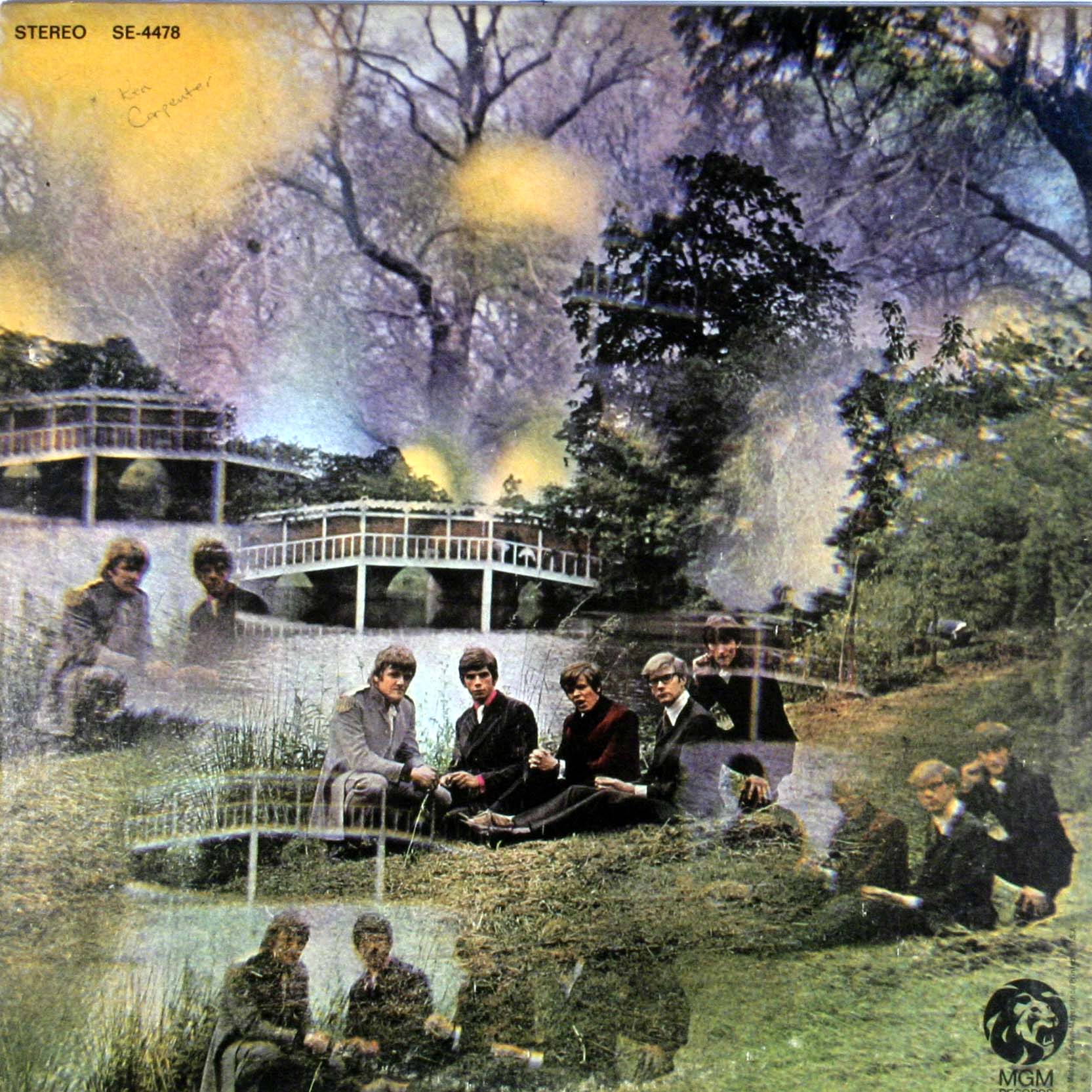
Herman’s Hermits – Blaze
One of the more unlikely bands to hop aboard the psychedelia
bandwagon in 1967 was bubblegum pop group Herman’s Hermits. From the
vivid artwork to opening with a Donovan cover to naming the thing Blaze,
Peter Noone & co. must have wanted it to be very clear that this
was not the clean-cut Herman’s Hermits of old. It’s all a little on the
nose, but Herman’s Hermits really pulled it off. The Donovan cover
(“Museum”) sounds great in their hands, but it’s really the original
songs here that make Blaze so impressive. Band members Derek
Leckenby, Keith Hopwood, and Karl Green penned “Busy Line,” “I Call Out
Her Name,” and album highlight “Moonshine Man,” all of which are overtly
Beatlesque. They’re great singers, which allowed them to pull of the
lush harmonies that are such a crucial and addictive part of psych-pop.
The musicianship is just fine too. The looping guitar melody of “Busy
Line” and the busy basslines of “Moonshine Man” give those songs an edge
that’s both hypnotic and danceable. (They sort of sound musically like
’65-era Beatles but vocally like ’67.) Frequent contributor (and
eventual band member) Pete Cowap penned the darker psych-pop of “Last
Bus Home,” and he co-wrote the standout closing track “Ace, King, Queen,
Jack” with Peter Noone. More of a rocker than the rest of the Blaze songs, “Ace, King, Queen, Jack” had Noone trying on a harder-edged delivery and totally selling it. It’s a Nuggets-style psych song and rivals a handful of songs on that comp. [A.S.]

The Electric Prunes – The Electric Prunes
This record is on the list simply based on the inclusion of one of
the greatest garage psych songs ever, the tremolo fuzz freakout “I Had
Too Much to Dream (Last Night).” There’s a reason that song was the
first song on the legendary Lenny Kaye-curated Nuggets
compilation. But there’s more to the record than just that song. The
Prunes were a three guitar assault when they made this record. They
would go on to have a number of lineup changes; session musicians were
brought in to play parts the members couldn’t on future recordings,
including the complex arrangements by the late David Axelrod on Mass in F Minor.
For this, their debut, they were tasked with recording songs written
by the songwriting team of Annette Tucker and Nancie Mantz (only two
songs were written by the band members), but the band were talented
enough to add weird psych flourishes throughout which gave the straight
ahead pop style write-ups a decided edge. “Train for Tomorrow”’s
sinister backbeat gives way in the middle to a swinging, almost jazz
like guitar exploration. The other “hit” on the record, the four on the
floor Bo Diddley stomper “Get Me to the World on Time,” has enough
distorted sound effects underneath to make your mind melt. There are a
couple of throwaway joke tracks that were inexplicably included but
there is enough on this record to make it more than a one hit curio. [P.P.]
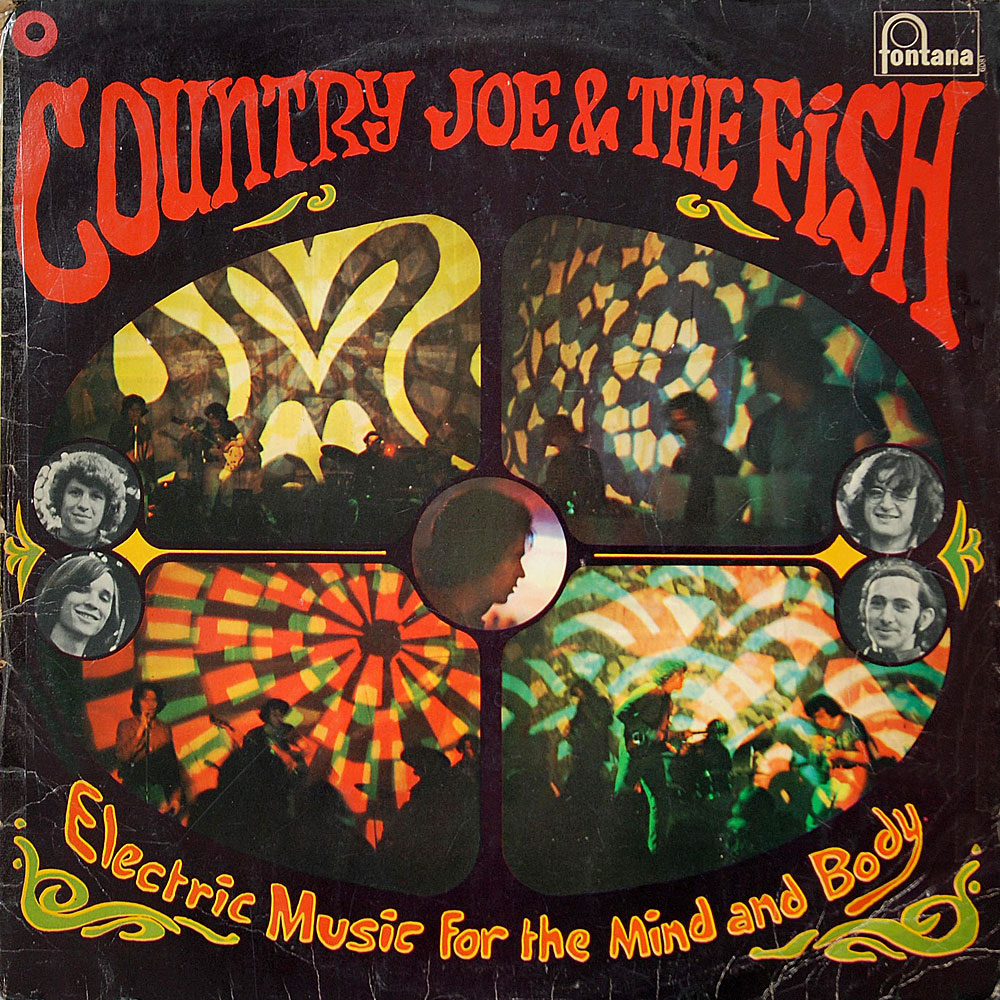
Country Joe and the Fish – Electric Music for the Mind and Body
This has to be one of the most appropriately titled albums ever made.
If all you know is Country Joe’s “Fixin to Die” anthem, then let this
record be your introduction to what really made this band so exciting.
Starting out as a folk band, they soon morphed into something much
greater. Much of the music here is rooted in the blues which was a
staple of most of the bands coming out of the San Francisco psych scene
at the time. This album has a little bit of everything else though.
Their early folk roots are evident in songs such as “Sad and Lonely
Times.” The fried balladry in “Grace,” dedicated to Jefferson Airplane’s
Grace Slick. You have the first glimpses of the political songwriting
that Country Joe McDonald would explore throughout his career with
“Super Bird” and its call out of “It’s a bird, It’s a plane, it’s a man
insane, it’s my President LBJ.” Organ flourishes are littered throughout
and you can bet yer bones that Ray Manzarek and Jim Morrison were
checking this out down in LA. The real hero for me throughout is the
guitar work of the amazing Barry Melton. Not flashy by any means, it’s
sinewy, slinky and in service of the song at all times, until of course
he shows off some real fireworks in “Death Sound.” This is one of the
more underrated and overlooked guitar players of that era. If you want
even more punch, check out the original mono version which was lovingly
reissued a few years ago (and on special editon vinyl for Record Store
Day) after the original tapes had been thought to be lost or too
damaged. [P.P.]

Captain Beefheart – Safe As Milk
A genuine eccentric, Don Van Vliet was a one-of-a-kind musician and
songwriter. He pulled from Delta Blues and R&B but filtered it
through his crazed psyche (and fingers), and it came out sounding
uniquely like Captain Beefheart. With His Magic Band (that included the
great Ry Cooder), Beefheart made Safe As Milk twice. A&M
rejected the original recordings (“too negative”) in 1966 and dropped
the band, so he went back to the studio and remade it for Buddah. Even
with some of Van Vliet’s wildest urges tamed, Safe as Milk is
anything but, sounding like someone left a stack of records on a
radiator to melt. Cooder helps keep this train from going off the rails,
but the wild energy remains. The performances, Van Vliet’s unhinged
vocal delivery, and oddball instrumentation (theremin, marimba) make
“Zig Zag Wanderer,” “Dropout Boogie,” “Yellow Brick Road” and “Abba
Zaba” enduring weirdo touchstones. [B.P.]

Big Brother and the Holding Company – Big Brother and the Holding Company
You can think of this album as before Janis Joplin got her blues
going. This, their debut album, was first released in summer of ’67 (but
recorded at the end of 1966) right after they knocked ‘em dead at the
Monterey Pop Festival. It must have been a shock for people who then
picked up the album — the vocal pyrotechnics and the revved up psych by
way of the blues were still being formed. This is none more evident than
on the most well known song “Down on Me.” Straightforward and to the
point, it shows no signs of being the raucous live highlight it was to
become, as you can hear on the Live at Winterland ’68 posthumous
release. A song like “Intruder” has Joplin’s Texas by way of San
Francisco drawl playing possum against the guitar mind twisting of Sam
Andrew. You can see the musical connection forming that led to sparkling
results in the future. It’s not all tame Joplin though. You can hear
her wail in tracks like “Coo Coo” and “Women is Losers”, on the road to
becoming one of the most powerful voices in rock and roll history. [P.P.]
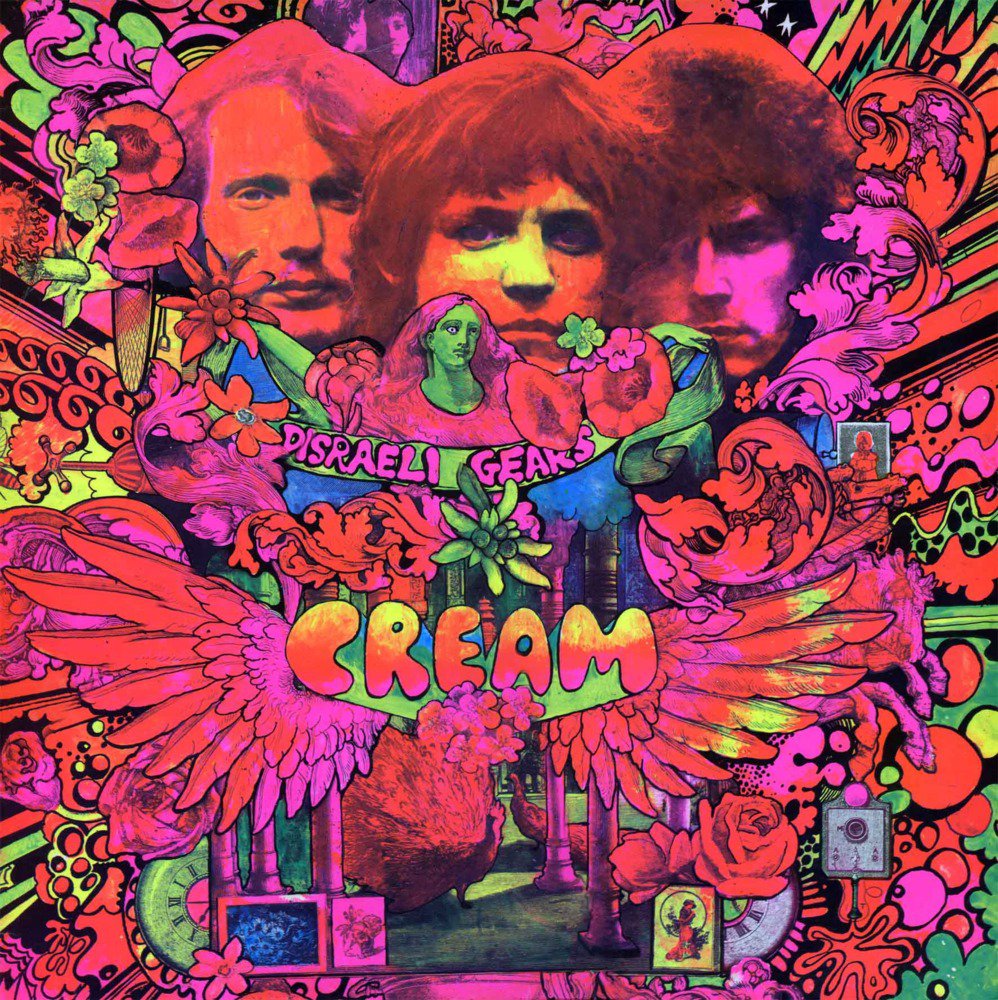
Cream – Disraeli Gears
Eric Clapton became so devoted to a rather traditional form of blues
rock for so much of his career, that it’s easy to forget that he’s the
guy who wrote “Strange Brew.” Joined by the extraordinary talents of
Jack Bruce and Ginger Baker, Clapton had one of the Summer of Love’s
strongest power trios with Cream, and surely a strange brew of some kind
went into the making of Disraeli Gears. Plus, is there a better
name for a Summer of Love anthem than the album’s biggest song,
“Sunshine of Your Love”? Decades of high school bands may have ruined
that song’s guitar riff, but every time you re-listen to Clapton play
it, you remember why it’s so iconic. Guitar god status alone doesn’t
make a great psychedelic rock record, though. It’s the songwriting on Disraeli Gears
that earns it a spot on this list. Take the woozy harmonies of “World
of Pain” and “Dance the Night Away,” or Jack Bruce singing “the colors
of the sea bind your eyes with trembling mermaids” on “Tales of Brave
Ulysses.” Those moments make Disraeli Gears even more tripped out than Clapton’s wah pedals do. [A.S.]

The Left Banke – Walk Away Renee/Pretty Ballerina
While the flower-power movement is mainly associated with the West
Coast (and swinging London), New York City was not a barren garden, and
for a while The Left Banke rivaled The Zombies and Love as preeminent
makers of sublime baroque pop. Led by songwriter/keyboardist Michael
Brown, few made as good of use of harpsichords and mellotrons as The
Left Banke. Their debut album has most of their best material, including
the two spectacular singles (both released in 1966) that comprise this
1967 album’s title. But there’s also the equally fantastic “She May Call
You Up Tonight” (maybe the band’s best-ever song), “I’ve Got Something
on My Mind” and “I Haven’t Got the Nerve.” The minor-key melodies are
more Autumn of Melancholy than Summer of Love, but the foliage is no
less beautiful. [B.P.]

The West Coast Pop Art Experimental Band – Part One
With a name like The West Coast Pop Art Experimental Band, you had a
pretty good idea of what you were getting (and where it was from). Yet
they also have an odd backstory. Bob Markley, the wealthy son of an oil
tycoon, bought his way into another group, The Laughing Wind, renamed
them and became their lyricist and leader. He also owned the name and
the publishing, a sore point with the rest of the band, and tensions
between them would soon become an unrepairable rift. But Part One,
their first album for Reprise, was the best example of their name
incarnate, equal parts pop, art and experimentation, as heard on the
Byrds-y “Transparent Day” and “Shifting Sand,” and the dark, unsettling
cult classic “I Won’t Hurt You.” [B.P.]
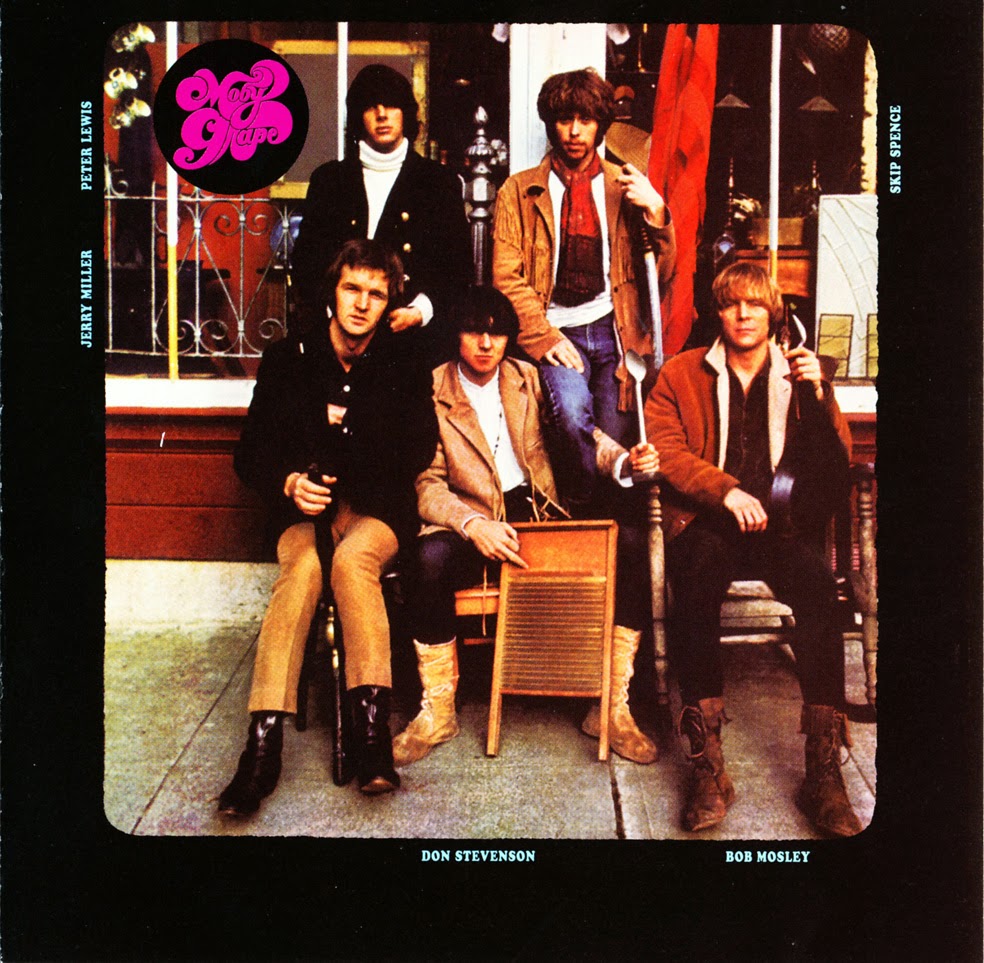
Moby Grape – Moby Grape
Featuring original Jefferson Airplane drummer Skip Spence (who
switched to guitar here), Moby Grape sported three guitarists, five
talented songwriters and and seemingly endless promise. Unfortunately,
things started to fall apart not long after the release of the band’s
self-titled debut album via a deadly cocktail of clashing egos (the band
didn’t form so much as were assembled), too-much-too-soon behavior,
fights with manager Matthew Katz (who owned rights to the name), and
crazy major label marketing stunts like releasing five singles off this
album all on one day. By 1969 it was over, though they got back together
in various incarnations every few years. None of that can tarnish Moby Grape,
full of breezy jams, killer harmonies, impeccable musicianship and a
whole bunch of instant classics, none more than Spence’s “Omaha.” [B.P.]
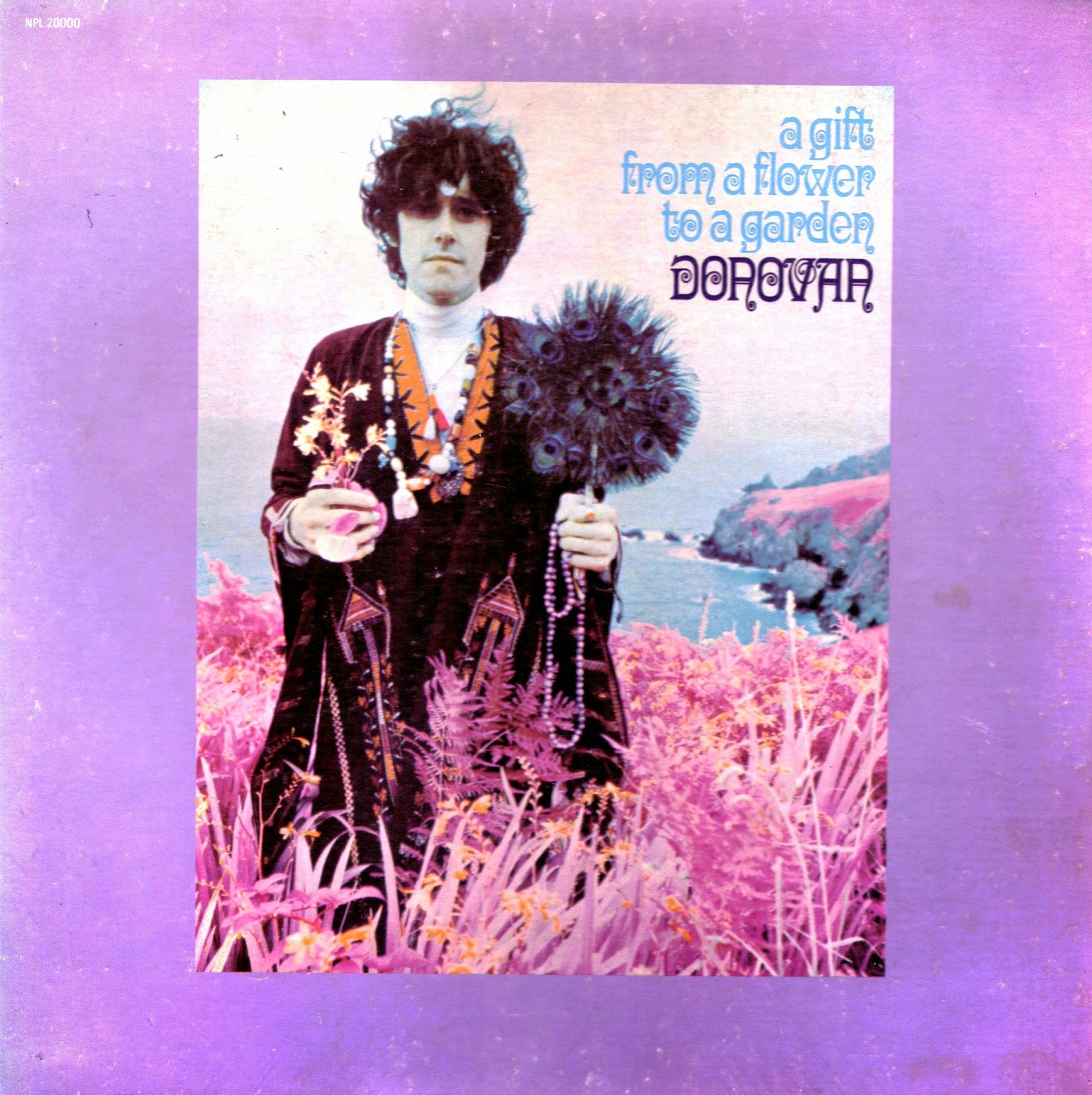
Donovan – A Gift From a Flower to a Garden
Donovan personified the hippy folk ideal, having spent time
meditating with the Maharishi, living on a commune and making some of
the era’s great music. He was a busy bee in 1967, releasing both Mellow Yellow
and this two-record box set that overflows with riches. The first disc
has the poppier material, including the shimmering, gorgeous “Wear Your
Love Like Heaven,” while the second leans heavier on spare,
introspective folk. All this could come off as fey, pretentious
posturing in lesser hands, but Donovan brings an easy confidence to this
at times whimsical material, making the idea of dropping out and
turning on an especially groovy one. [B.P.]

The Monkees – Pisces, Aquarius, Capricorn & Jones Ltd.
On their second album of 1967, The Monkees deliver the finest album
of their short career, with half the songs written by pros like Carole
King & Gerry Goffin, and Harry Nilsson, with the rest by the band,
who really came into their own here. Mixing pop smarts (“Pleasant
Valley Sunday,” “Cuddly Toy”) with a growing maturity (“The Door Into
Summer,” “Love is Only Sleeping”), Pisces is also defiantly
trippy at times, from weird spoken word interludes to full-on psych
numbers like “Daily Nightly” and “Words.” 1968’s Head might have the ultimate Monkees psychedelic entry (“Porpoise Song”), but this is the album to reach for again and again. [B.P.]

The Doors – Strange Days
The Doors’ self-titled debut album (released in January of 1967) is a
near-perfect album, and quite arguably the band’s best. But its
follow-up Strange Days (released in September of 1967) is
undoubtedly the more psychedelic album. The word “Strange” being in the
album title and two song titles should be a dead giveaway, and if it’s
not, how about the song title “I Can’t See Your Face In My Mind”? I’m
not one to judge a book by its cover though — the music here really is
tripped out. “Horse Latitudes” is an early example of the
spoken-word-and-sound-effects stuff that Jim Morrison would become known
for. That’s the weirdest song on the album, but outside of bluesy
single “Love Me Two Times,” nothing on Strange Days is
straightforward. A lot of the album has this hazy, dreamy vibe that you
can hear on the title track, “You’re Lost Little Girl,” “Unhappy Girl,”
and more. The aforementioned “I Can’t See Your Face In My Mind” is as
much a trip as the name implies. “My Eyes Have Seen You” goes into the
kind of jamming that was going on up north of The Doors in San
Francisco. The album’s best moment, though, is its 11-minute closing
track “When The Music’s Over.” The Doors already figured out how to do a
trippy, lengthy closing track with “The End” on their debut, but “The
End” sounds pretty sober compared to “When The Music’s Over.” This is
the song where Ray Manzarek, Robby Krieger, and John Densmore fully
figured out how to take the listener on all kinds of mind-expanding
journeys, and Jim Morrison’s stream-of-consciousness lyrics and
whisper-to-a-scream delivery were at their most effective. No matter how
many times I hear it, when Jim comes back in screaming during the “We
want the world and we want it now” section, I get chills. [A.S.]
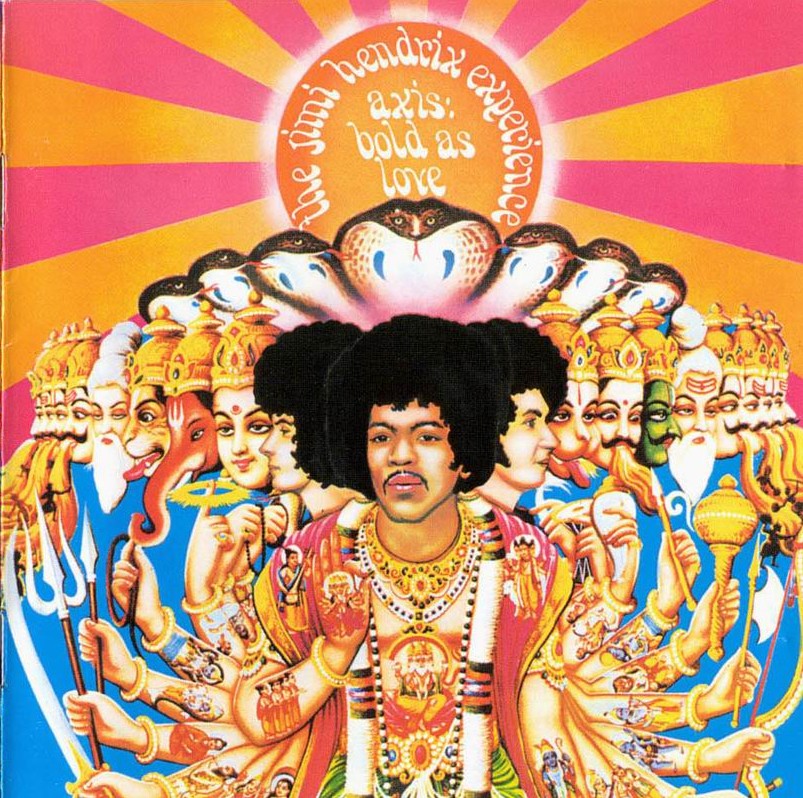
The Jimi Hendrix Experience – Axis: Bold As Love
Not bad for a contractual album is it? In mid 1967, Hendrix, Mitch
Mitchell and Noel Redding decamped once again to Olympic Studios to
finish out a contract that called for two albums in the same year. They
were armed with recording techniques (Leslie speakers, wah wah pedals,
phasing, panning) that are considered normal today, but in 1967 must
have been a what the fuck moment for anyone listening. Some say it’s a
looser album than Are You Experienced. Maybe so but it’s also a
record by a musician much more in control of the vision he wanted his
music to be. Starting off the record, “EXP” presents a bit from the
“very peculiar gentleman” Paul Caruso speaking about UFOs while Hendrix
phases feedback from his guitar that any of today’s noise bands would
respect. From there it’s off to the races with the rollicking “Up From
the Skies.” Yes, there are the hits that have been played endlessly such
as “Spanish Castle Magic,” “If 6 Was 9,” “Wait Until Tomorrow,”
“Castles Made of Sand” and the gorgeous “Little Wing.” Dig deeper into
it though and you find even the lesser known tunes have wonders about
them. Check out the revved up blues rock of “Ain’t No Telling,” the kind
of stuff Jimi must have cooked up years earlier on the Chitlin’ Circuit
playing behind the likes of Curtis Knight and Little Richard. It all
culminates with the wondrous, anthemic “Bold as Love,” with its genius
two guitar solo structure. The song’s coda was apparently the first use
of stereo phasing. “Just ask the axis, they’re all bold as love” indeed.
[P.P.]

The 13th Floor Elevators – Easter Everywhere
As far as psychedelic music goes, there are Johnny Come Latelies,
bandwagoners, and scene-stealers, and then there’s The 13th Floor
Elevators. According to Roky Erickson documentary You’re Gonna Miss Me,
the band’s Tommy Hall coined the term “psychedelic rock.” Whether you
believe that or not, there’s no doubting the Austin, TX band were
psychedelic true believers (maybe too devout) who led the
charge for the movement. Hall also brought some of the Elevators’ more
mind-expanding lyrics, and his unique “electric jug” playing was as much
a part of their signature sound as Erickson’s powerful, ragged voice.
From the opening guitar line of “Slip Inside This House” through “She
Lives (in a Time of Her Own)” and the badass groove of “(I’ve Got)
Levitation,” Easter Everywhere is a transportive album to a higher plane that can still take you there today. [B.P.]

grp_13a.99
Bee Gees – Bee Gees’ 1st
Despite the enduring appeal of disco-era Bee Gees and Barry Gibb’s
incredible run as a hitmaker, the band’s earlier years as a moody
baroque act are still undiscovered country for a lot of people. This
album, which is actually the Bee Gees’ third (but first to get
an international release), is resplendent with harpsichords, oboes,
strings, and other such ornate instrumentation. Nowhere is this more
striking than on single “New York Mining Disaster 1941,” one of the more
unlikely hits of 1967. “Turn of the Century,” “Cucumber Castle,” and
“Red Chair Fade Away” were very much whimsical products of the age, but
“To Love Somebody” (the album’s other U.S. hit) is a glimpse of the pop
savvy the Bee Gees would hone a decade later. [B.P.]
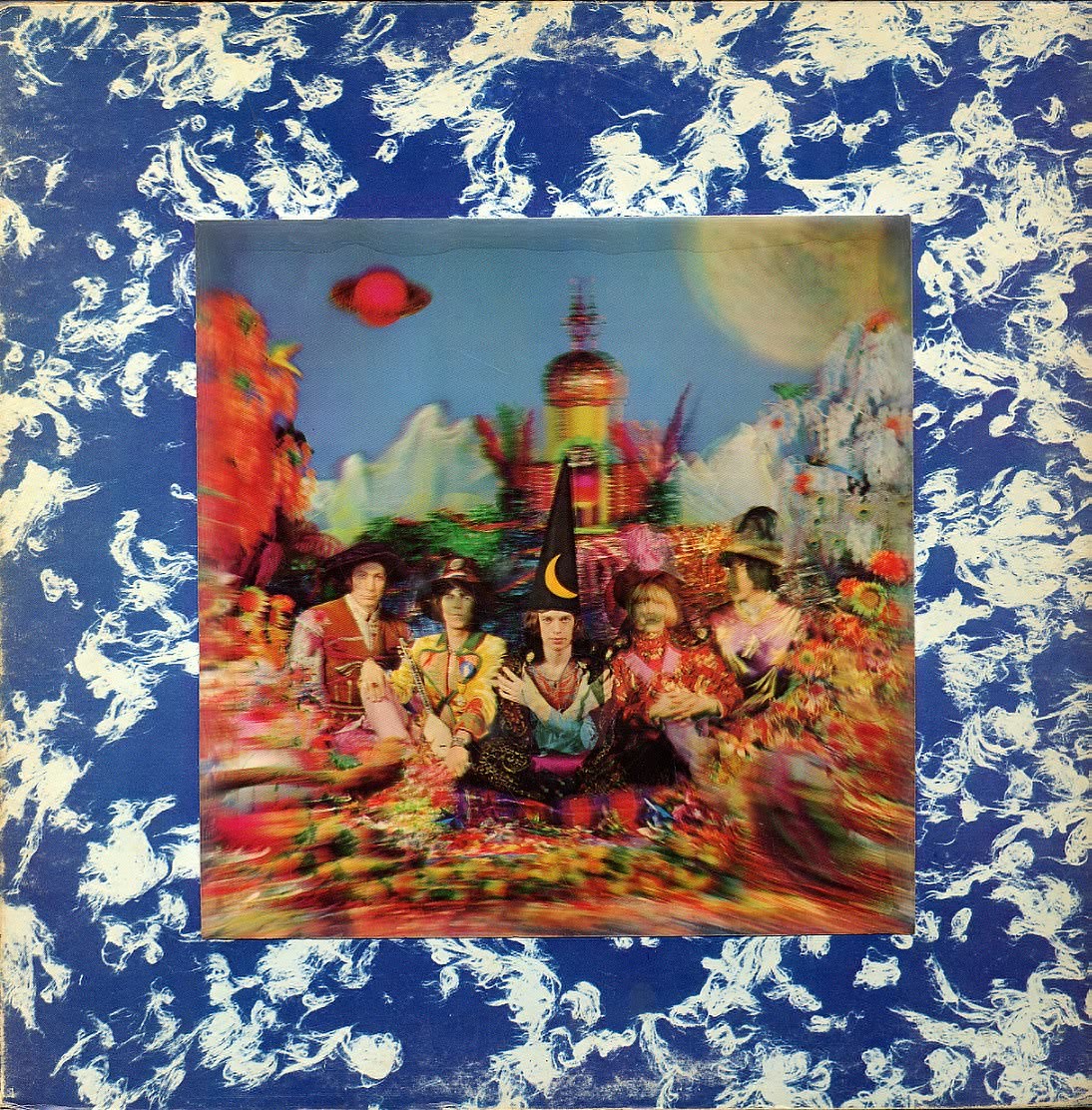
The Rolling Stones – Their Satanic Majesties Request
Just about every rock band caught the psychedelia fever in the
mid-to-late ’60s and the Stones were no different. For a British band
who started out sounding strikingly American, the Stones began echoing
The Beatles and The Kinks with the British whimsy of “Mother’s Little
Helper” and the raga rock of “Paint It Black” in ’66. They dipped their
toes further into psychedelia with January 1967’s underrated Between the Buttons, and by December of that year they ditched the blues entirely and went full Sgt. Pepper’s with the release of Their Satanic Majesties Request. From the vivid album artwork to the experimental art pop, some considered it too similar to Sgt. Pepper’s.
The band have mostly abandoned the album and almost never play music
from it at their shows, but it’s become a cult classic with psych-rock
fans — so much so, that psych revivalists The Brian Jonestown Massacre named an album after it. It’s a cult classic for good reason too. Opener “Sing This All Together” is whimsical pop that truly beats a few Sgt. Pepper’s
songs at their own game. The mellotron and vibrato-vocal fueled “In
Another Land” might be the weirdest song in the Stones’ discography.
“Sing This All Together (See What Happens)” reprises the opening track
but turns it into an eight-and-a-half minute trek through druggy sound
effects and extended jams. “She’s A Rainbow” is the closest the album
comes to having a true pop song and it rivals most other psych-pop
singles from that year. “Gomper” takes the raga rock of “Paint It Black”
into way trippier territory. They mastered psychedelia so much on this
album; it’s a shame they never did anything like it again. [A.S.]
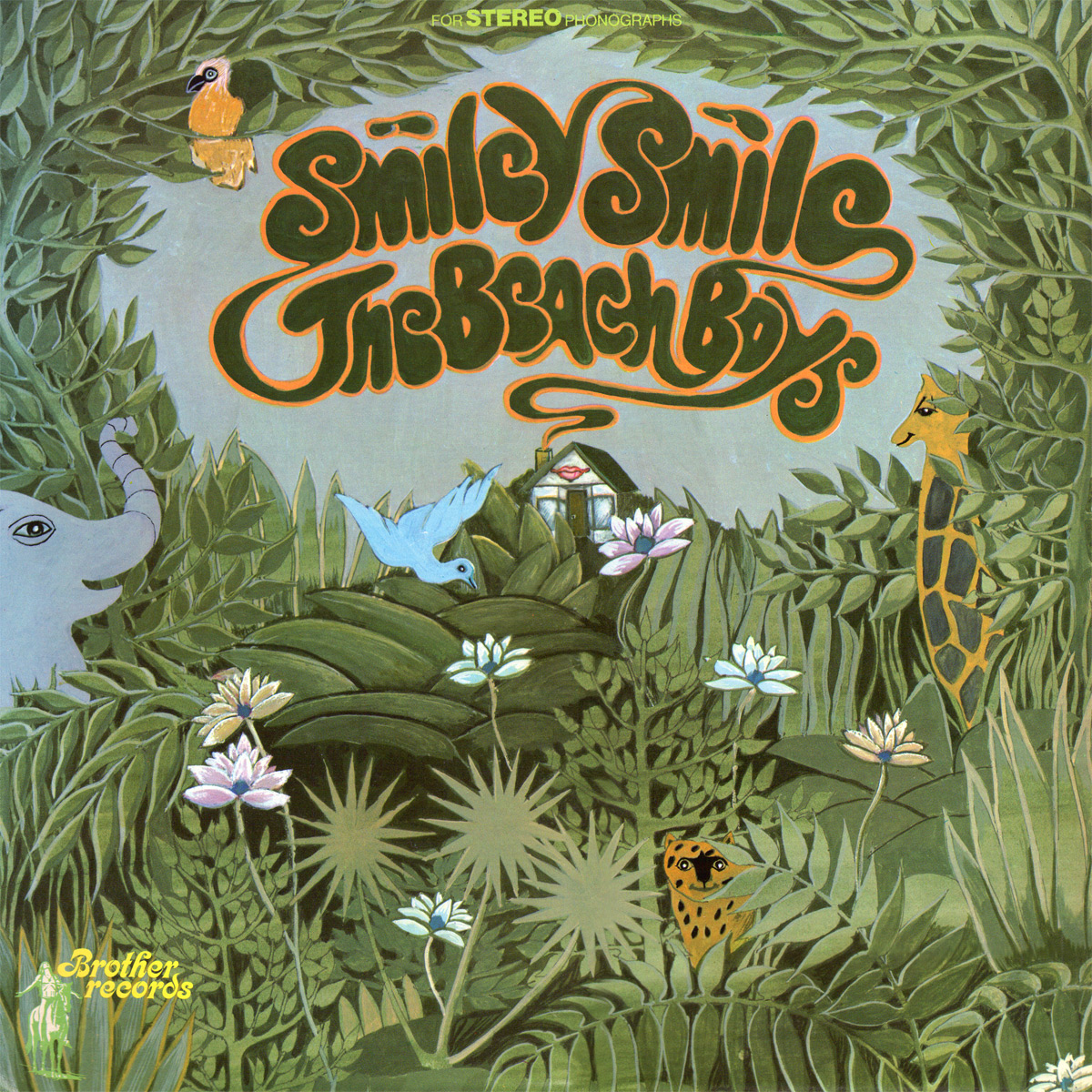
The Beach Boys – Smiley Smile
The Beach Boys’ best album Smile should have come out in 1967, but instead it was scrapped and in its place came the lo-fi, home-recorded Smiley Smile. A lot of people felt underwhelmed by it (and more just never even heard it), but enough of us saw more in Smiley Smile
than the remnants of an aborted project. It paved the way for so much
of the lo-fi, home-recorded pop music to come decades after Smiley Smile‘s release. Without it, it’s hard to imagine the existence of stuff like the Elephant 6 collective or even Weezer’s Pinkerton, a rawly-recorded album by a Beach Boys-obsessed band that also drew material from a scrapped, more ambitious album. Smiley Smile
may have been a blip in ’60s mainstream music, but it’s a highly
influential album 50 years later. It’s also the trippiest album The
Beach Boys ever made. The Smiley Smile version of “Wind Chimes” is way more psychedelic than the Smile
version. “Fall Breaks and Back To Winter” literally sounds like a bad
acid trip. And if the boys weren’t actually high when they recorded
“She’s Goin’ Bald” and “Little Pad,” they sure sounded like it. If Smile had come out in 1967, Sgt. Pepper’s
would’ve had some actual competition and the course of pop music may
have played out very differently. It can be a bummer that that didn’t
happen, and this poorly-received album came out instead. But if
everything happens for a reason, then Smile was aborted so Brian Wilson & co. could make one of the most peculiar and unexpectedly influential albums of the 1960s.[A.S.]

Blossom Toes – We Are Ever So Clean
The greatest soft psych (or pop sike if you want) record you’ve never heard of. How does a British band compete with Sgt Pepper’s
in 1967? Well, for many many bands it was to emulate the whimsical
nature of the Fab Four. It was like this for these five guys playing in
an R&B band called The Ingoes. After getting linked up with
Yardbirds manager Giorgio Gomelsky they changed it up, took on a new
name and made one of the sunniest, very British psychedelic records you
will ever hear. What set them apart from the pack though was there was
real grit underneath the whimsy. Hard to shake those R&B roots. Much
of the style can be attributed to the fact that the band laid down the
tracks and then Gomelsky brought in session musicians to add a whole
host of instruments and color, which is the magic of this record.
Repeated listens bring up sounds you didn’t hear previously. That
glockenspiel deep in the middle of the seemingly straight ahead swing of
“I’ll Be Late for Tea.” There’s also the deep “appreciation” throughout
to The Kinks who were kicking around their own style of gritty whimsy
during this period. Just close your eyes during the song “People of the
Royal Parks” and you wouldn’t be wrong if you thought that was Raymond
Douglas Davies singing. Unfortunately this joy was short lived; the band
made only one more record which was not very good, and that was it.
Bootlegged for years, this was finally officially reissued a few years
ago, though you can still look for an original on the Marmalade label
which will run you around 400 bucks for an ever so clean one. [P.P.]

Jefferson Airplane – After Bathing at Baxter’s
Coming just months after Jefferson Airplane’s 1967 breakthrough Surrealistic PIllow, After Bathing at Baxter’s
lacks the hits of its predecessor but it’s a way better representation
of their increasingly heavy and improvisational live show. Surrealistic Pillow
may begin with a sturdy rock beat, but this one begins with guitar
feedback. That feedback leads right into “The Ballad of You and Me and
Pooneil,” the loudest song the Airplane had released thus far (and still
one of their very best), making it known right off the bat that they
were a different band than the one that recorded Surrealistic Pillow. Paul Kantner, the psychedelia wiz who would go on to write a sci-fi concept album, wrote significantly more of this one, and the more pop-minded Marty Balin wrote significantly less. Also, while Surrealistic Pillow‘s
best-known songs were brought to the Airplane from Grace Slick’s
previous band, here Slick and the rest of the Airplane were starting
from scratch. The album feels more collaborative as a result, with the
members’ various personalities standing out less and blending together
more. With songs like the haunting, acid-induced “rejoyce,” it’s darker
and trippier than anything the bad had done prior. But for all of the
talk of how Baxter’s is a more experimental follow-up to Surrealistic Pillow,
it has a handful of psych-pop moments that could’ve been hits with the
right push. The breezy “Martha” and the bold-sounding “Two Heads” are
superior to plenty of what’s on classic rock radio today. [A.S.]

The Doors – The Doors
The myth that Jim Morrison created of himself often looms larger than
The Doors’ actual music, and that’s kind of a bummer. Rock mythology
doesn’t always age very well, and sooner or later we realize the
“troubled artist” trope is not something to romanticize. It might seem
rock n’ roll to live fast and die young, but it’d be even cooler if Jim
Morrison (and Jimi Hendrix and Janis Joplin and Brian Jones and Pigpen
and other Summer of Love stars) were alive right now. Even if they were
making shitty records or playing casinos, at least they’d have made it
out of their 20s. It’s also a bummer because beneath the deification of
Jim Morrison is a damn good rock band. Robby Krieger’s finger-picked,
soaring leads, John Densmore’s jazz-influenced drumming, and Ray
Manzarek’s iconic keyboard-playing (which more than made up for The
Doors’ lack of a bass player) came together to form one of the most
distinct sounds of the 1960s. Whether they were making bluesy hard rock
(as on The Doors opener “Break on Through”) or journeying off into acid-fueled jam territory (as on The Doors
closer “The End”), The Doors were a musical force. And whether or not
Jim Morrison is truly a poet, he’s definitely a great rock frontman. His
wild stage presence, baritone singing, and ability to go from spoken
word to a throat-shredding scream seems revolutionary in the context of
1967 and still sounds untouchable today. Nearly all of his talents were
on display on the band’s debut album, which plays like a greatest hits.
More than any other Doors album, you can hear almost every song of The Doors on the radio today and not one of them gets old (okay, maybe “Light My Fire” gets a little old). [A.S.]

The Jimi Hendrix Experience – Are You Experienced
Much like how The Beatles’ significance as songwriters is talked
about to death, no one needs to hear any more hype for Jimi Hendrix as a
guitarist. That said, if you put on Are You Experienced, turn
the volume way up, and hear the feedback intro of “Foxy Lady” go into
that iconic fuzzed-out riff, you’ll be transported back to the first
time you realized guitars were cool. Like The Beatles, everything they
say about Hendrix is true. No one could do what he could do with a
guitar. He just made it wail in a way nobody else did. He made music
out of feedback in a way nobody else did. You didn’t have to see his
extravagant outfits to know he had swagger; it came through in the
riffs. And Hendrix knocked it out of the park right away — his debut
album has some of his best-known songs. On top of “Foxy Lady,” Are You Experienced
has his version of “Hey Joe” and the still-inescapable “Purple Haze.”
If you think Hendrix, you think riffs like “Purple Haze.” But Hendrix
wouldn’t still be this respected 50 years later just for riffs. Are You Experienced
is filled with great songwriting, and also with so much noise. For all
of his screaming solos, he’s got songs where all he’s doing with that
guitar is making noise. Too much talk of Hendrix is about his technical
ability and his influence. Hendrix holds up all these years later
because of the feeling. [A.S.]

Jefferson Airplane – Surrealistic Pillow
Maybe the most iconic album out of San Francisco in 1967 is Surrealistic Pillow.
It’s the home of the two Jefferson Airplane songs that most people
know, “White Rabbit” and “Somebody to Love” (both carried over from
Grace Slick’s previous band The Great Society), but Surrealistic Pillow
achieved much more than those two songs. Opening with the “Bo Diddley
Beat” and the memorable guitar riff of “She Has Funny Cars,” it’s
immediately clear that the Airplane’s second album would be a more
confident album than their debut, The Great Society, and really
anything else coming out of San Francisco at the time. It also has some
of the Airplane’s greatest contributions to psychedelic folk, thanks to
the gorgeous one-two of “Today” and “Comin’ Back to Me,” and Jorma
Kaukonen’s impressive acoustic guitar workout “Embryonic Journey.” The
Airplane would get heavier soon after this album, but you can already
hear those seeds being sown on Surrealistic Pillow. “3/5 of a
Mile in 10 Seconds” and “Plastic Fantastic Lover” each have one foot in
their calmer sound and another in what was to come. Revved up versions
of those two songs would fill their live sets for years. Today,
Jefferson Airplane may be a less legendary band than their friends and
neighbors in The Grateful Dead (whose Jerry Garcia is credited as the
“spiritual advisor” on Surrealistic Pillow), most likely because
the Dead became a cult touring band as the Airplane were fizzling out.
But the Dead never mastered the studio the way the Airplane did on Surrealistic Pillow. Of all the studio-recorded representations of San Francisco psychedelia, this one tells the story best. [A.S.]

The Byrds – Younger Than Yesterday
After making their foray into psychedelic rock with 1966’s “Eight
Miles High,” The Byrds dove even further into trippy sounds with Younger than Yesterday.
With Gene Clark out of the band and the album only including one cover
song (Bob Dylan’s “My Back Pages”), the other band members were stepping
up as songwriters and really all of them were on board with the new
psychedelic direction — Chris Hillman wrote the hazy and
reverse-tape-filled “Thoughts and Words” — but it was David Crosby
emerging as the band’s true mind expander. (It was Crosby, after all,
who gave a speech at Monterey Pop Festival urging politicians to take
LSD.) His freeform “Mind Gardens” (which was also aided by reverse tape)
made “Eight Miles High” sound straightforward in comparison. The kind
of downcast, depressing songs he’d often write throughout his career
were preceded on this album by “Everybody’s Been Burned.” One of the
most gorgeous songs he ever wrote, “Renaissance Fair” (which The Byrds
opened with at Monterey), has lyrics such as “I smell cinnamon and
spices / I hear music everywhere / All around kaleidoscope of color / I
think that maybe I’m dreaming” sung with the harmonizing that was
characteristic of the Summer of Love. Younger than Yesterday‘s followup The Notorious Byrd Brothers
would see the band rejecting another Crosby classic, “Triad,” which he
would instead give to Jefferson Airplane, whose members he went on to
collaborate with several times, including on his debut solo album (which
also featured several Grateful Dead members). More than anyone else in
The Byrds (or in CSNY), Crosby went on to become a hippie icon, and, in
many ways, his work on Younger than Yesterday was the first thing to solidify that. [A.S.]
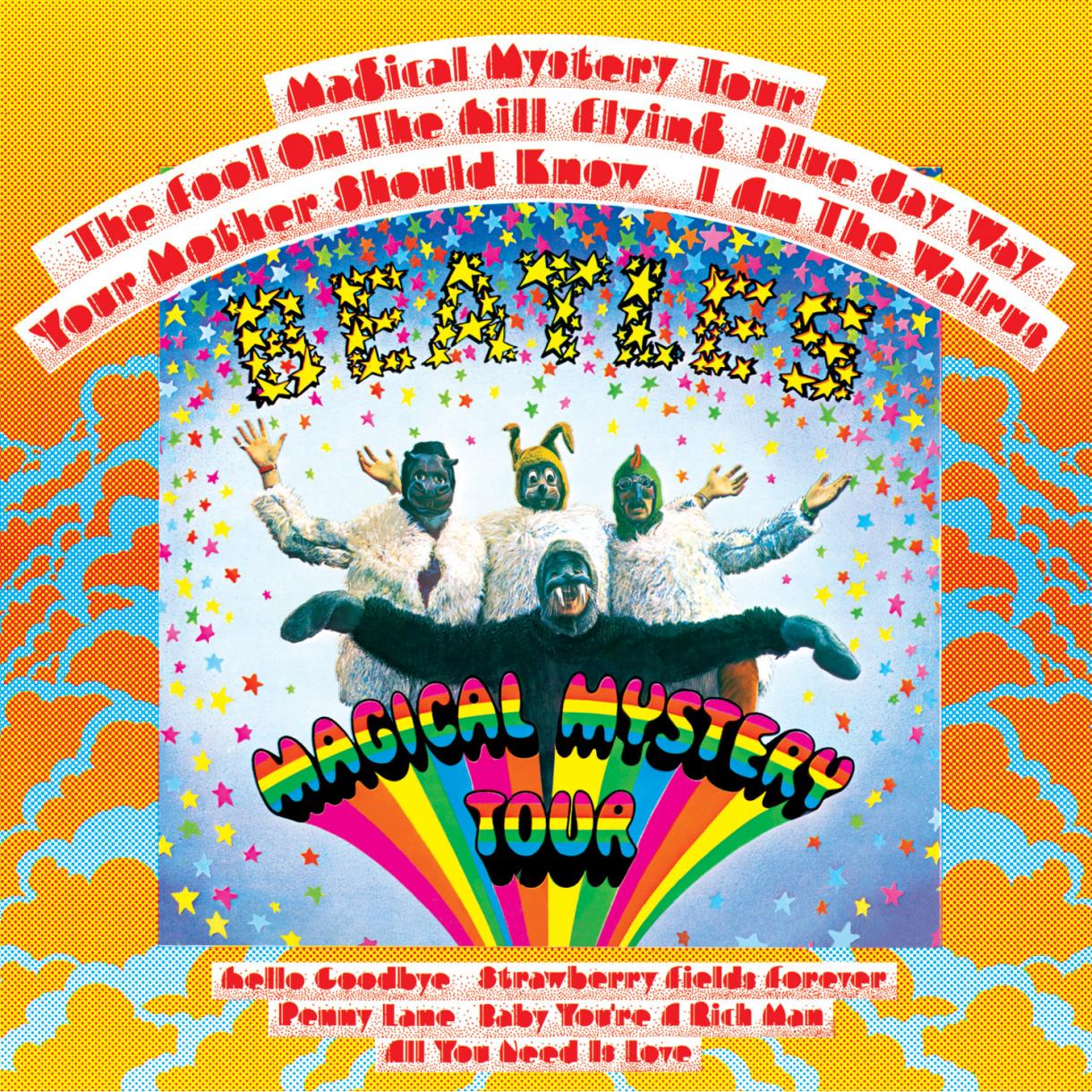
The Beatles – Magical Mystery Tour
Sgt. Pepper’s may be the most “important” Beatles album released in 1967, but the weirder Magical Mystery Tour
is arguably more of a gem as far as anti-commercial psychedelic rock
goes. John and George were really the ones who took The Beatles into
genuinely weird territory, but Magical Mystery Tour was such an
oddity that even Paul got trippy with “The Fool on the Hill.” George’s
“Blue Jay Way,” which took full advantage of the advancements in studio
production techniques that The Beatles were making (like reversed tape),
is one of the band’s creepiest songs. “Flying” did wordless psych-pop
as good as The Beach Boys. John’s “I Am the Walrus” is delightfully
strange, timeless, and really doesn’t need an introduction at this
point. The US release (the one I’m used to and prefer) tacked on five
1967 non-album singles, and those singles really do sound like they
belong here. When I hear the opening notes of “Magical Mystery Tour,” I
know I’m about to embark on a journey that doesn’t end until the
climactic ending of “All You Need Is Love,” much like I feel about the Sgt. Pepper’s
title track and “A Day In The Life.” Among those five songs is the
game-changing “Strawberry Fields Forever,” the song Brian Wilson
partially credits for causing him to abort Smile. Like “I Am the
Walrus,” it really needs no introduction and it’s really everything
everyone says it is. With some of the band’s most gorgeous use of
strings, horns, and Indian classical instruments, and some of John’s
most surreal songwriting, psychedelic pop almost never gets better than
“Strawberry Fields Forever.” [A.S.]
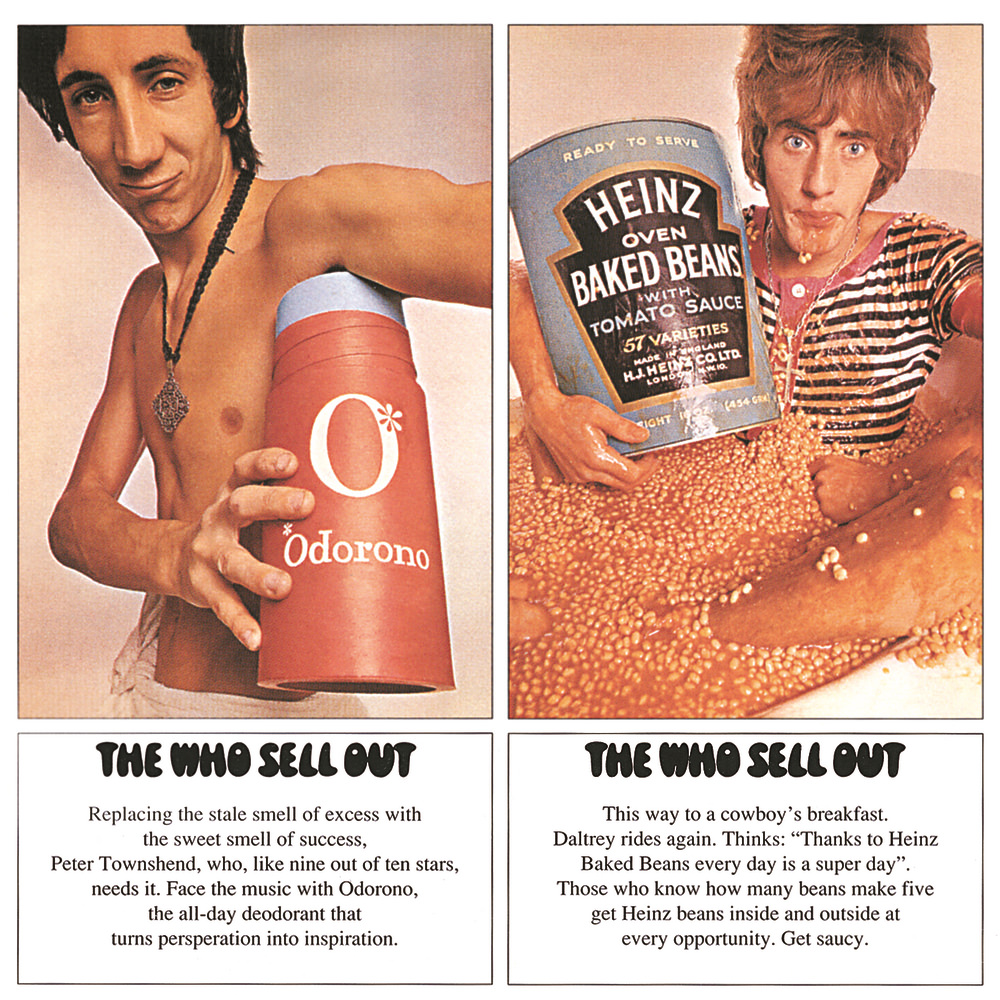
The Who – The Who Sell Out
The Who are a lot of things. On their early singles, they’re a great proto-punk band. On Tommy and Quadrophenia, they are still the poster children for rock operas. On Who’s Next,
they are about as good an economical hard rock band as you’ll ever get.
And for just one album, released in the year everyone was doing it, The
Who were a great psychedelic rock band. The album’s big single, “I Can
See For Miles” was one of the original psych-rock era’s trademark songs.
Like “Good Vibrations,” it defied both psychedelic rock and the album
that called it home, becoming a massive stand-alone hit. It’s the only
song on The Who Sell Out that remains a staple in The Who’s live
sets today, but it’s just the tip of the iceberg. Opening with “Armenia
City In The Sky,” it’s clear right away that The Who are on some
different shit (and maybe some harder drugs) than ever before or since.
Filled with dizzying sound effects hazy vocals, and just general
weirdness, “Armenia City In The Sky” did psych-rock as good as the bands
who dedicated their entire careers to the genre. The harmonies on “Mary
Anne With The Shaky Hand” are even dreamier than the opening track.
“Sunrise” is druggy folk music at its finest. Throughout the album, the
band can be heard using the studio as an instrument and experimenting
with all the new sounds that rock bands were learning about at the time.
This side of them might get downplayed today by the radio and by the
band themselves, but these songs still rival their biggest hits. [A.S.]
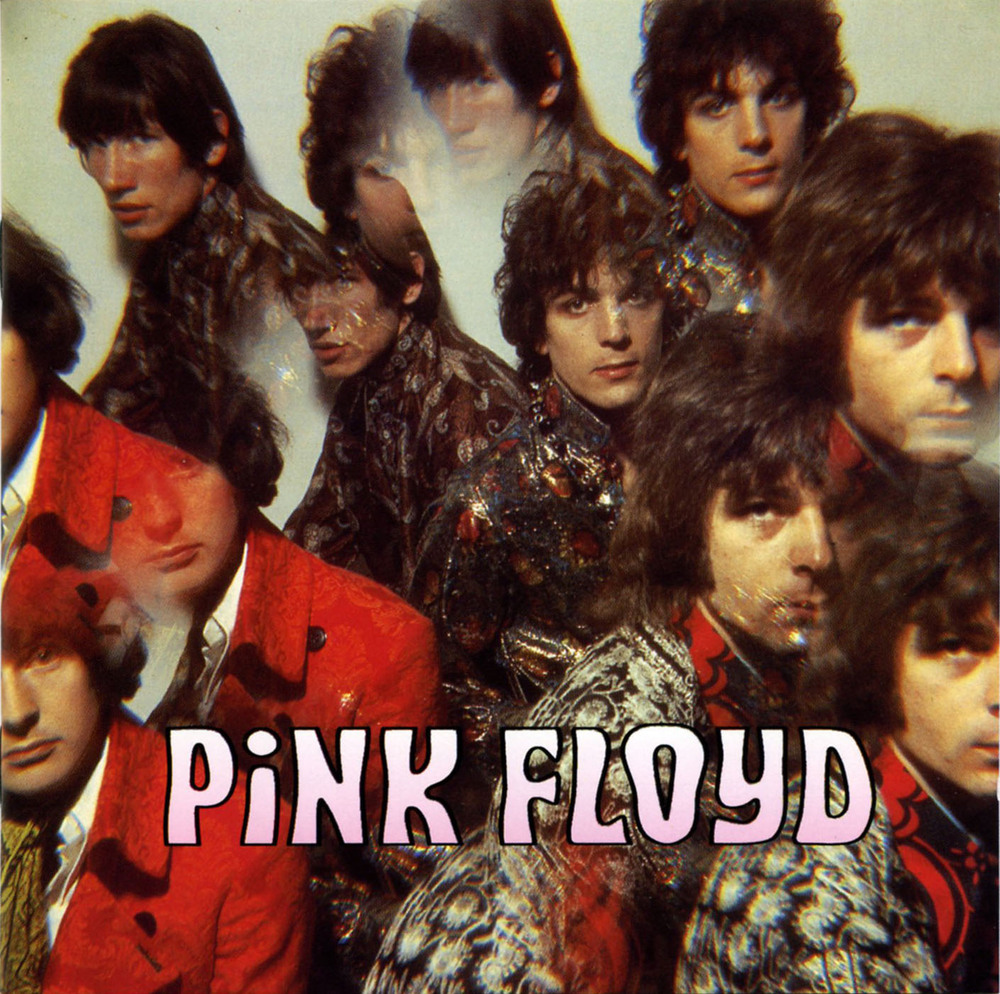
Pink Floyd – Piper at the Gates of Dawn
Far from the same band who would go on to record Dark Side of the Moon, the Pink Floyd of 1967 were masters of psychedelia right off the bat. Piper at the Gates of Dawn,
their only album recorded entirely with cult hero Syd Barrett as lead
singer and core songwriter, is as classic as psychedelic pop gets. It’s
got a similar sense of whimsy to the big British Invasion bands, but
it’s weirder and darker than them. There’s the James Bond riffs and the
addictive chorus of “Lucifer Sam,” the dreamy harmonies and Eastern
melodies of “Matilda Mother,” the warped, space-rock jam “Interstellar
Overdrive,” the haunting “Chapter 24,” and so much more. Barrett came
off like a genuine freak, but he was also a truly great songwriter. It’s
a shame he and the band had to part ways. Pink Floyd obviously went on
to do great things, and Syd Barrett’s solo albums are gems, but neither
of them ever created anything like Piper at the Gates of Dawn again. [A.S.]
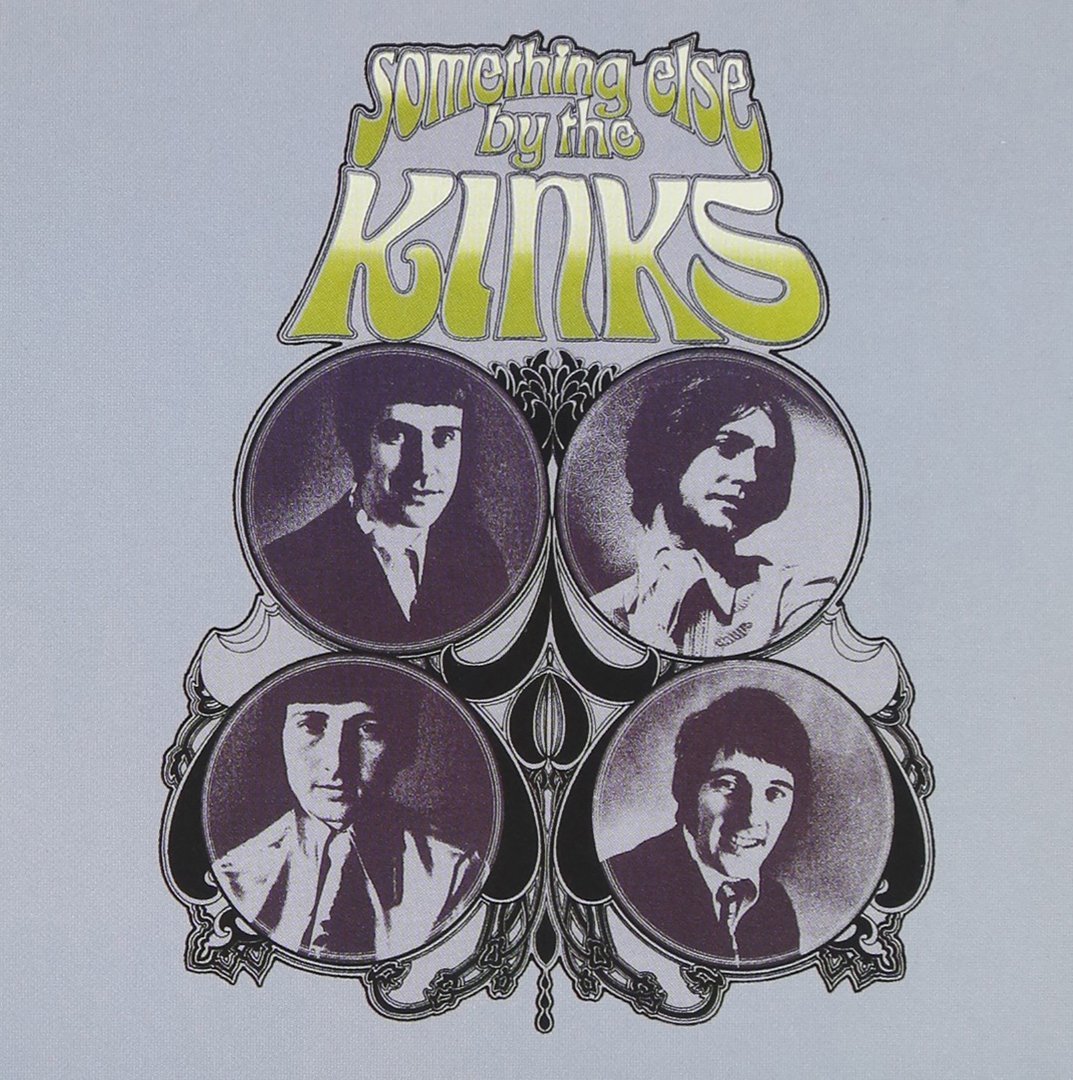
The Kinks – Something Else by The Kinks
While not especially trippy, the influence of psychedelia
can be heard all over this album which is indeed something else,
especially next to the early fuzzed-out, all-day, all-night rave-ups
that made The Kinks stars. A little of that youthful energy remains
here, coaxed out by producer Shel Talmy (the last time they’d work
together), but the mood is decidedly more pastoral and baroque. Ray
Davies hadn’t fully moved to the village green yet, but the van was
packed, and he was making room for detuned pianos and harpsichords and a
sketchbook full of very British characters. Something Else
contains Davies’ most-loved songs, including the “David Watts,” the
wistful “No Return,” and what may be his quintessential song, “Waterloo
Sunset.” Ray’s brother Dave does all right here too, contributing two
real winners (“Funny Face” and “Love Me till the Sun Shines”) and
singing lead on what is arguably the album’s best song, “Death of a
Clown.” [B.P.]

The Velvet Underground – The Velvet Underground & Nico
You may not (rightly) associate The Velvet Underground’s debut album
with the Summer of Love — New York is not San Francisco and there were
certainly different drugs involved. But “Venus in Furs,” “All Tomorrow’s
Parties” and “The Black Angel’s Death Song,” among others, feel like
seeds of a particular style of psychedelic music, which are also all
over just about everything that became punk or indie rock. Where would
The Jesus & Mary Chain, The Black Angels and Primal Scream be
without the Velvets? As Brian Eno famously quipped, the LP didn’t sell
many copies but everyone who bought one formed a band. For those who
preferred black to paisley but were still looking to lose their mind,
this was 1967’s record of choice. [B.P.]

The Beatles – Sgt Pepper’s Lonely Hearts Club Band
No other record (or band) looms as large on this list as The Beatles’ Sgt Pepper’s Lonely Hearts Club Band,
one of the most acclaimed, biggest-selling albums ever made. Its
influence cannot be be overestimated, from the music within to its
iconic cover art. Its late May / early-June release date also made for a
genuine kickoff to the Summer Of Love. The album is, of course,
overflowing with flower-power touchstones such as “Lucy in the Sky With
Diamonds,” “Fixing a Hole,” and “A Day in the Life,” and their lyrical
imagery and production were being imitated and released by other groups
before autumn hit. The Fab Four were at their psychedelic zenith in
1967. They kicked the year off with “Strawberry Fields Forever,”
released Sgt Pepper’s in May, “All You Need is Love” shortly after that, and Magical Mystery Tour
(see our #7) before the year ended. Their immense popularity also meant
The Beatles were expanding minds of people who didn’t even drink
coffee. Not even terrible movies starring the Bee Gees and Peter Frampton, or unnecessary remixing, can put a dent in it. [B.P.]

Love – Forever Changes
Few bands epitomized the flower-power West Coast scene as much as
Love, whose name alone kind of said it all. This was the final album the
original lineup of the band would make together, and conflicts within
the band, particularly between songwriters Arthur Lee and Brian
MacClean, made for a unique energy that still runs electric through Forever Changes.
That one-upmanship rivalry of Lee and MacClean resulted in great song
after great song (there are zero clunkers on this LP), and the sweeping,
baroque production is perfect, bringing everything to technicolor life.
(If you need it summed up in a song, look no further than album-opener
“Alone Again Or.”) Yes, Sgt Pepper’s Lonely Hearts Club Band,
which is regularly called the Greatest Album of All Time, is an
unquestionable psychedelic classic. It came in at a very close second on
this list. But for us it really was the summer of Love, and Forever Changes captures it as vividly as a just-snapped polaroid. [B.P.]
Geen opmerkingen:
Een reactie posten